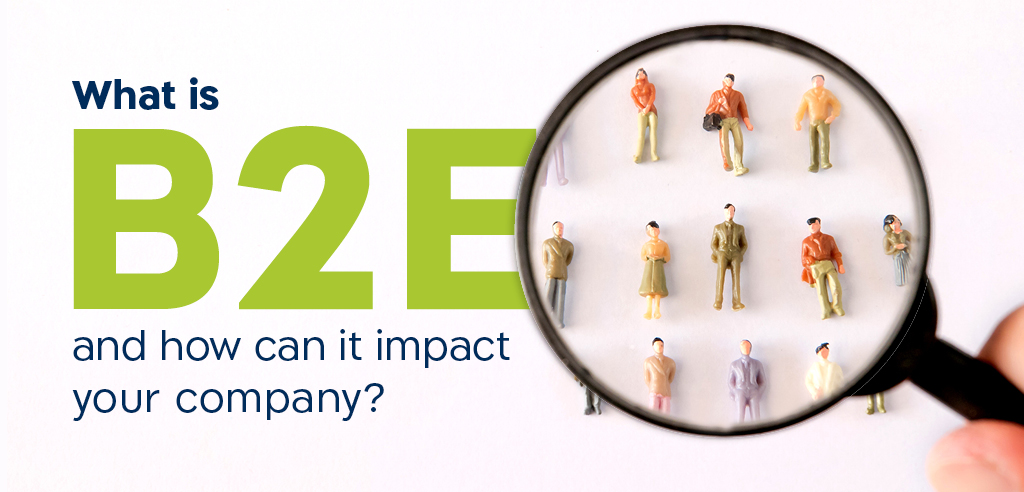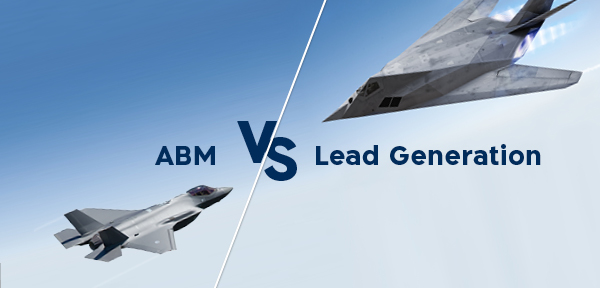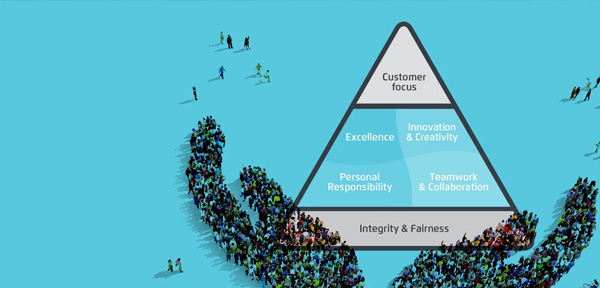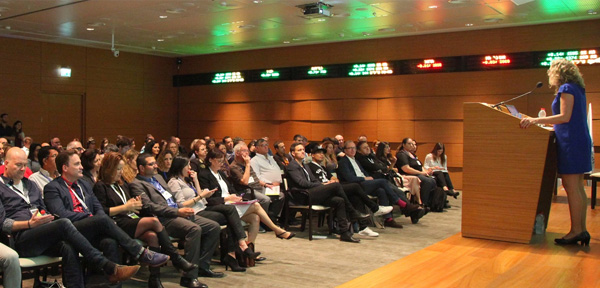The BL[OZ]
Rules, Regulations & Medical Brands How your medical brand can stand out within the regulatory framework
By
Nirit Elyovich, MBA
, 15/08/2024
Balancing marketing ambition with regulatory compliance is no easy task for medical brands. Our latest blog explores how early collaboration between marketing and regulatory teams can transform these challenges into opportunities, ensuring your brand stands out while staying compliant. Discover the smart strategies to help your brand shine within the regulatory framework.
min read
Imagine a ballerina trying to dance with one hand tied behind her back. That’s how it often feels during a branding process at a medical company. The marketing team wants to fly high, while the regulatory team wants to keep your feet firmly on the ground, ensuring you comply with every sentence, word, and letter.
There are no good guys or bad guys in this story. It’s simply about complexities of a different magnitude that your brand needs to successfully navigate. It's a story about a road not yet taken.

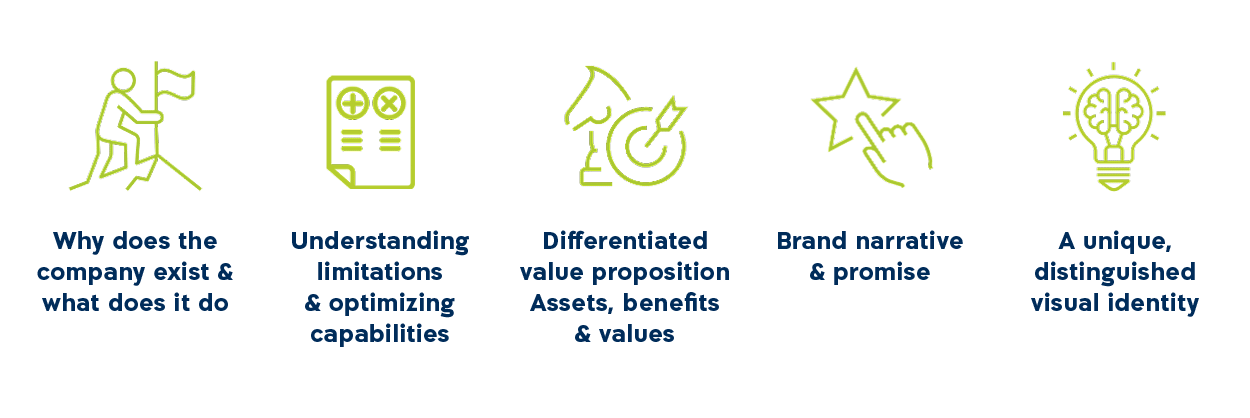


When the journey takes an unexpected turn
During branding strategy kick-off meetings, we take a deep dive into your product, technology, and service. We’re looking for a fresh perspective, a promise not yet made, a story yet to be told. At this point, we get excited as we hear about groundbreaking technologies, solutions, and life-enhancing, life-prolonging products. Our jaws drop. With this WOW feeling, we continue the learning process in which we talk to customers, analyze the competition, and create a multi-participant meeting within the company to fine-tune its significant and differentiated strengths and generate outstanding benefits for its customers. As the process continues, we begin to understand the regulatory limitations. Suddenly, “Cinderella”, your extraordinary technology is being held back by regulatory limitations and is covered with “soot”.
Understanding limitations and optimizing capabilities
During the process, we’ve heard “It’s a given” or “It's powerful, but I can't confirm it" more times than we can count. Responses like these made us understand there must be a better way. That’s how our new module was born. It’s placed right at the beginning of the branding strategy process, which sets the stage for an open and guided dialogue between marketing and regulatory early on.
Challenging the norms
This dialogue is about helping the marketing team to understand the limitations in depth, and for the regulatory team to delve into the marketing team’s needs. It’s an authentic dialogue that creates a space to carry out activities that weren’t possible before. Understanding the precise needs opens up new perspectives and enables solutions within the boundaries of regulations. We understand the importance of compliance, but our experience shows that there are many degrees of freedom that are not being tested.It’s not about overstepping the bounds of the approved claims, but we also don’t want to take a step backward in the name of conservatism.
Sometimes it's a matter of overall wording, sometimes it's just changing one word. It's the little things that make a big difference. Stopping to ask questions often gives you a competitive advantage. Sometimes, there won’t be any flexibility in the claims you make, but at least you’ll know that you’ve turned over every stone.Structured and managed conflicts are an opportunity
Remember, whoever sits at the decision-making table wants the company to succeed and do the best they can. Inherently, conflict is not a negative; it can also be an opportunity. Don't let emotions run the process. As we often say, “Don’t be right, be smart!” As with every relationship where there’s an inherent conflict, there’s great value in professional guidance to create the conditions for a productive dialogue. To meet this need, we’ve created a special collaboration between OZ Global B2B and Leap, led by Moran Faibish, who has extensive experience in leading marketing in global medical companies. Moran has hands-on experience in bridging the gap between marketing and regulations to create deep and unique brand promises — promises that aren’t possible without providing an informed and professional framework that enables constructive communication.Play smart
The more we play smart within the regulatory limits to make the most of your claims, the more we can create a differentiated value proposition that more accurately reflects your breakthrough technology. This is how your brand will shine. We’ll be there every step of the way to guide the process, refine the messaging, and make sure your “WOW” comes through loud and clear. If you’ve nodded your head while reading this, it’s time for us to talk.If you’ve nodded your head while reading this it’s time for us to talk.


Nirit Elyovich, MBA
VP Strategy
Contact Us

Brand Strategies Tailored for Healthcare Companies
Moran Faibish
Global Marketing and Business Development Strategist
Read more

What is Business to Employee (B2E) and how can it impact your company?
By
Guy Toledano
, 01/10/2023
Business-to-Employee, or B2E, refers to the strategies and technologies that companies use to support and engage their employees. B2E covers everything from attracting, recruiting, training, and onboarding employees, to providing self-service solutions and individualized access to essential tools or software.
min read
Business-to-Employee, or B2E, refers to the strategies and technologies that companies use to support and engage their employees. B2E covers everything from attracting, recruiting, training, and onboarding employees, to providing self-service solutions and individualized access to essential tools or software. While traditional e-commerce models such as business-to-business (B2B) and business-to-consumer (B2C) focus on sales and customer interactions, B2E focuses on providing internal support systems, resources, and tools to employees.
One of the main goals of B2E is to improve employee satisfaction and retention. When employees are disengaged or unhappy with their work environment, it can lead to lower morale and higher turnover rates, which can be costly and disruptive to a company's operations. By providing employees with the resources and tools they need to succeed, and creating a positive work culture, companies can improve retention and attract top talent.
A B2E portal is a central hub that provides employees with easy access to company-specific information and resources. This can include company news, calendars, software solutions, and employee-defined documents. The portal is often customizable, allowing employees to personalize their experience and access the information and resources that are most relevant to them.
One example of a B2E portal is an online service company management platform that allows employees to easily access information about their services or customers, as well as submit supply requests and manage their work schedule. B2E portal should also provide employees with access to company announcements, training resources, and tools for collaboration and communication.
 B2E strategies can also be used to support specific departments or teams within a company, such as sales teams that need flexible access to customer information and sales tools. For example, a B2E portal might include a CRM system that allows sales reps to easily access customer data, create and track leads, and manage their sales pipeline.
There are many benefits to implementing a B2E strategy, including improved communication and collaboration, increased efficiency and productivity, and cost savings. By providing employees with the tools and resources they need to succeed, companies can create a more engaged and motivated workforce that is better equipped to meet the challenges of today's business environment.
Have a question? Want to learn more? Don’t hesitate to reach out!
B2E strategies can also be used to support specific departments or teams within a company, such as sales teams that need flexible access to customer information and sales tools. For example, a B2E portal might include a CRM system that allows sales reps to easily access customer data, create and track leads, and manage their sales pipeline.
There are many benefits to implementing a B2E strategy, including improved communication and collaboration, increased efficiency and productivity, and cost savings. By providing employees with the tools and resources they need to succeed, companies can create a more engaged and motivated workforce that is better equipped to meet the challenges of today's business environment.
Have a question? Want to learn more? Don’t hesitate to reach out!

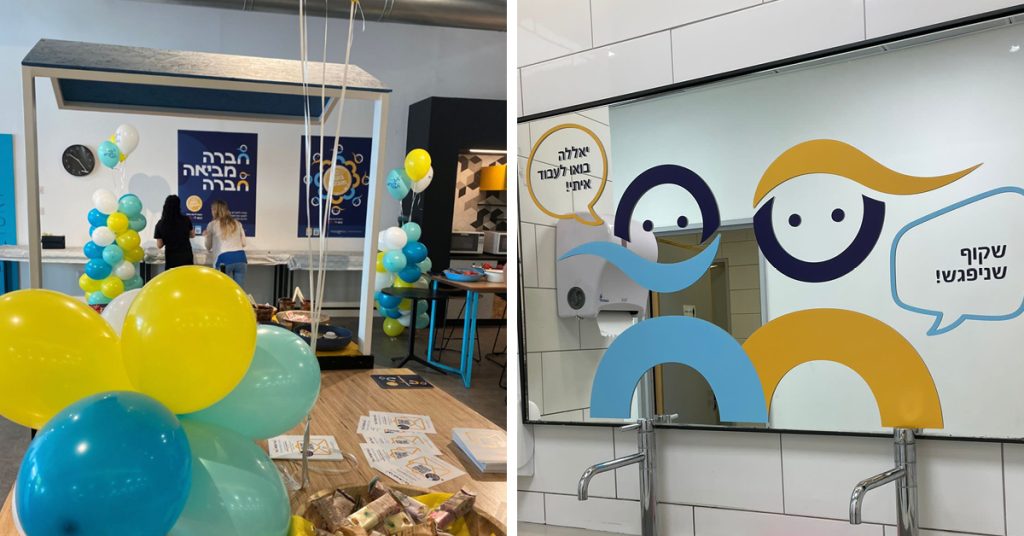
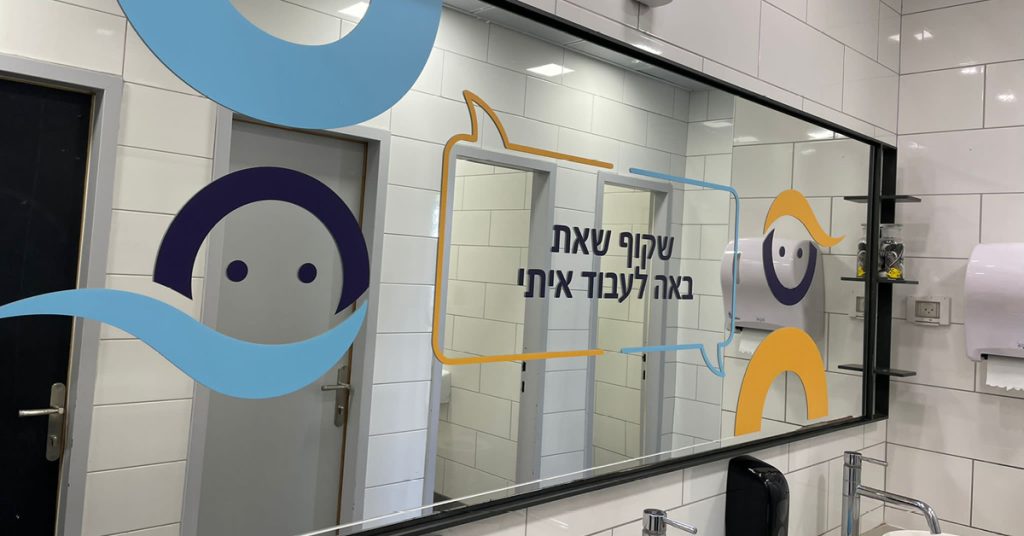
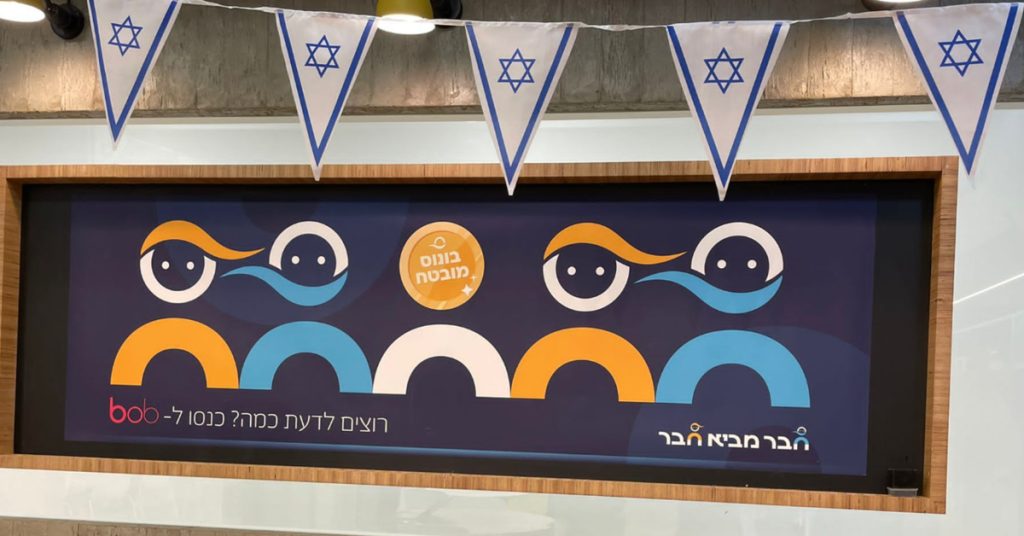
 B2E strategies can also be used to support specific departments or teams within a company, such as sales teams that need flexible access to customer information and sales tools. For example, a B2E portal might include a CRM system that allows sales reps to easily access customer data, create and track leads, and manage their sales pipeline.
There are many benefits to implementing a B2E strategy, including improved communication and collaboration, increased efficiency and productivity, and cost savings. By providing employees with the tools and resources they need to succeed, companies can create a more engaged and motivated workforce that is better equipped to meet the challenges of today's business environment.
Have a question? Want to learn more? Don’t hesitate to reach out!
B2E strategies can also be used to support specific departments or teams within a company, such as sales teams that need flexible access to customer information and sales tools. For example, a B2E portal might include a CRM system that allows sales reps to easily access customer data, create and track leads, and manage their sales pipeline.
There are many benefits to implementing a B2E strategy, including improved communication and collaboration, increased efficiency and productivity, and cost savings. By providing employees with the tools and resources they need to succeed, companies can create a more engaged and motivated workforce that is better equipped to meet the challenges of today's business environment.
Have a question? Want to learn more? Don’t hesitate to reach out!


Maytronics - OZ Global B2B


Account Based Marketing (ABM) Vs. Lead Generation
By
Guy Toledano
, 17/08/2023
Are you struggling to decide between account-based marketing (ABM) and Lead Generation for your business? In this blog, we explore the key differences between the two strategies and how they can be used together to achieve optimal results. From understanding the benefits of demand generation to utilizing ABM for "land and expand" tactics. This guide provides valuable insights for marketers looking to boost their ROI. Additionally, the blog discusses how to effectively target the two main types of LinkedIn users to generate leads and increase engagement.
min read
Account-based marketing (ABM) and lead generation are two powerful strategies for generating revenue and boosting return on investment (ROI). While both approaches have their own unique benefits, it's important to understand the key differences between them and how they can be used together to achieve optimal results.
Lead generation, the core of demand generation, is a strategy that involves generating a large number of new leads for the sales team by targeting specific markets and industries. This approach is ideal for creating awareness and interest in a product or service, and can be done through various channels such as LinkedIn Campaign Manager. In contrast, account-based marketing (ABM) is a targeted approach that focuses on reaching out to specific named accounts, rather than a broad audience. ABM is designed to engage with the right accounts and create personalized content that captures their attention and drives further engagement.
One key benefit of demand generation is that it brings leads in, at the top of the funnel and nurtures them until they become an opportunity for the sales team. However, as the market becomes saturated, the time, money, and resources needed to generate leads can eventually outweigh the results, leading to diminishing returns. This is where ABM comes in. By focusing on specific named accounts, ABM allows marketers to "land and expand" by targeting bigger fish that match the ideal account profile (IAP). This allows for a more efficient use of resources and a higher return on investment.
 While ABM and demand generation may seem like competing strategies, they can actually be used together to achieve optimal results. For example, demand generation can be used to create awareness and interest in a product or service, while ABM can be used to generate qualified leads and sign-up new customers.
This marketing tactic, can start with a broad-based demand generation campaign to create awareness, which will help to identify targeted leads or target market segments, which can then be used to inform a more targeted ABM campaign. An ABM activity can be used to reach out to specific named accounts with personalized content. These combined activities allow marketers to use both strategies to accelerate the buyer's journey and assist with selling.
It's also important to note that while ABM and demand generation are both outbound marketing strategies, inbound demand generation is also possible. By using inbound marketing tactics such as content marketing, SEO and other digital marketing strategies, you can drive leads and customers to your website and then use ABM to engage with them.
While ABM and demand generation may seem like competing strategies, they can actually be used together to achieve optimal results. For example, demand generation can be used to create awareness and interest in a product or service, while ABM can be used to generate qualified leads and sign-up new customers.
This marketing tactic, can start with a broad-based demand generation campaign to create awareness, which will help to identify targeted leads or target market segments, which can then be used to inform a more targeted ABM campaign. An ABM activity can be used to reach out to specific named accounts with personalized content. These combined activities allow marketers to use both strategies to accelerate the buyer's journey and assist with selling.
It's also important to note that while ABM and demand generation are both outbound marketing strategies, inbound demand generation is also possible. By using inbound marketing tactics such as content marketing, SEO and other digital marketing strategies, you can drive leads and customers to your website and then use ABM to engage with them.
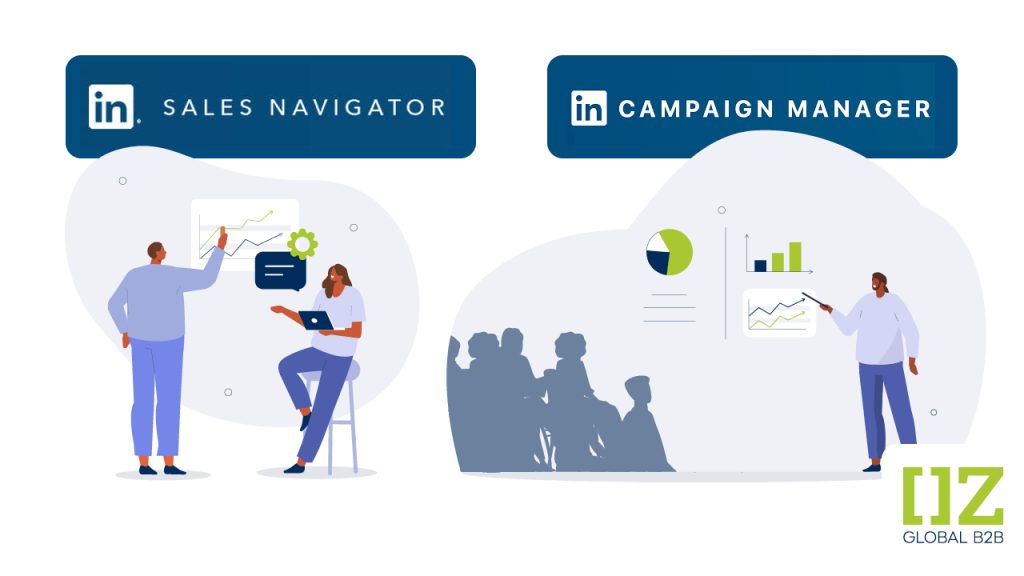 On LinkedIn, there are two primary types of users. The first group is known as "active users" and they exhibit a high level of engagement on the platform, such as performing searches, interacting with content, and sharing posts. These users also typically stay on top of their inbox and respond to relevant messages. These active users can be effectively targeted through an awareness campaign, followed by account-based marketing efforts.
The second main group of LinkedIn users are referred to as "basic users." These users tend to have a more limited level of activity on the platform, mostly just scrolling through their feed. They are less likely to respond to private messages. These basic users can be targeted through professional lead generation campaigns that will catch their attention while they are scrolling through their feed, with the use of an appealing message and creative content.
It is important to note that there are other types of users who fall somewhere between active and basic user, and by combining efforts of ABM with lead generation it will help in effectively reaching out to all types of users, with the right format and message.
In conclusion, account-based marketing and lead generation are both powerful strategies for generating revenue and boosting ROI. While they have their own unique benefits, it's important to understand how they can be used together to achieve optimal results. By using a targeted ABM approach in conjunction with a broad-based demand generation campaign, marketers can achieve their pipeline and revenue goals by capturing the attention of the right accounts and signing up new customers.
For more info and questions contact us.
On LinkedIn, there are two primary types of users. The first group is known as "active users" and they exhibit a high level of engagement on the platform, such as performing searches, interacting with content, and sharing posts. These users also typically stay on top of their inbox and respond to relevant messages. These active users can be effectively targeted through an awareness campaign, followed by account-based marketing efforts.
The second main group of LinkedIn users are referred to as "basic users." These users tend to have a more limited level of activity on the platform, mostly just scrolling through their feed. They are less likely to respond to private messages. These basic users can be targeted through professional lead generation campaigns that will catch their attention while they are scrolling through their feed, with the use of an appealing message and creative content.
It is important to note that there are other types of users who fall somewhere between active and basic user, and by combining efforts of ABM with lead generation it will help in effectively reaching out to all types of users, with the right format and message.
In conclusion, account-based marketing and lead generation are both powerful strategies for generating revenue and boosting ROI. While they have their own unique benefits, it's important to understand how they can be used together to achieve optimal results. By using a targeted ABM approach in conjunction with a broad-based demand generation campaign, marketers can achieve their pipeline and revenue goals by capturing the attention of the right accounts and signing up new customers.
For more info and questions contact us.
 While ABM and demand generation may seem like competing strategies, they can actually be used together to achieve optimal results. For example, demand generation can be used to create awareness and interest in a product or service, while ABM can be used to generate qualified leads and sign-up new customers.
This marketing tactic, can start with a broad-based demand generation campaign to create awareness, which will help to identify targeted leads or target market segments, which can then be used to inform a more targeted ABM campaign. An ABM activity can be used to reach out to specific named accounts with personalized content. These combined activities allow marketers to use both strategies to accelerate the buyer's journey and assist with selling.
It's also important to note that while ABM and demand generation are both outbound marketing strategies, inbound demand generation is also possible. By using inbound marketing tactics such as content marketing, SEO and other digital marketing strategies, you can drive leads and customers to your website and then use ABM to engage with them.
While ABM and demand generation may seem like competing strategies, they can actually be used together to achieve optimal results. For example, demand generation can be used to create awareness and interest in a product or service, while ABM can be used to generate qualified leads and sign-up new customers.
This marketing tactic, can start with a broad-based demand generation campaign to create awareness, which will help to identify targeted leads or target market segments, which can then be used to inform a more targeted ABM campaign. An ABM activity can be used to reach out to specific named accounts with personalized content. These combined activities allow marketers to use both strategies to accelerate the buyer's journey and assist with selling.
It's also important to note that while ABM and demand generation are both outbound marketing strategies, inbound demand generation is also possible. By using inbound marketing tactics such as content marketing, SEO and other digital marketing strategies, you can drive leads and customers to your website and then use ABM to engage with them.
 On LinkedIn, there are two primary types of users. The first group is known as "active users" and they exhibit a high level of engagement on the platform, such as performing searches, interacting with content, and sharing posts. These users also typically stay on top of their inbox and respond to relevant messages. These active users can be effectively targeted through an awareness campaign, followed by account-based marketing efforts.
The second main group of LinkedIn users are referred to as "basic users." These users tend to have a more limited level of activity on the platform, mostly just scrolling through their feed. They are less likely to respond to private messages. These basic users can be targeted through professional lead generation campaigns that will catch their attention while they are scrolling through their feed, with the use of an appealing message and creative content.
It is important to note that there are other types of users who fall somewhere between active and basic user, and by combining efforts of ABM with lead generation it will help in effectively reaching out to all types of users, with the right format and message.
In conclusion, account-based marketing and lead generation are both powerful strategies for generating revenue and boosting ROI. While they have their own unique benefits, it's important to understand how they can be used together to achieve optimal results. By using a targeted ABM approach in conjunction with a broad-based demand generation campaign, marketers can achieve their pipeline and revenue goals by capturing the attention of the right accounts and signing up new customers.
For more info and questions contact us.
On LinkedIn, there are two primary types of users. The first group is known as "active users" and they exhibit a high level of engagement on the platform, such as performing searches, interacting with content, and sharing posts. These users also typically stay on top of their inbox and respond to relevant messages. These active users can be effectively targeted through an awareness campaign, followed by account-based marketing efforts.
The second main group of LinkedIn users are referred to as "basic users." These users tend to have a more limited level of activity on the platform, mostly just scrolling through their feed. They are less likely to respond to private messages. These basic users can be targeted through professional lead generation campaigns that will catch their attention while they are scrolling through their feed, with the use of an appealing message and creative content.
It is important to note that there are other types of users who fall somewhere between active and basic user, and by combining efforts of ABM with lead generation it will help in effectively reaching out to all types of users, with the right format and message.
In conclusion, account-based marketing and lead generation are both powerful strategies for generating revenue and boosting ROI. While they have their own unique benefits, it's important to understand how they can be used together to achieve optimal results. By using a targeted ABM approach in conjunction with a broad-based demand generation campaign, marketers can achieve their pipeline and revenue goals by capturing the attention of the right accounts and signing up new customers.
For more info and questions contact us.
How to Meet & Influence Your Door Openers
Speakers: Nirit Elyovich and Rivi Kesten
The Door Openers strategy will bring you directly to the key people who will open the door for your company.
59 min
Using online marketing to generate a buzz (or a moo)
By
Miri Peled
, 15/05/2017
When Afimilk was preparing to launch its new AfiLab, the company turned to Oz Branding for assistance in creating a combined online and offline campaign.
min read
Afimilk case study: all you need is lab
When Afimilk — a pioneer and global leader of management technology for dairy farming — was preparing to launch its In-line Milk Lab internationally, the company turned to Oz for assistance in creating a combined online and offline campaign for the launch.
The two companies had already worked together successfully on Afimilk’s ongoing corporate branding needs, so they eased straight into defining the specific market needs for AfiLab Milk Analyzer, building a compelling visual identity and brand promise for the product, and creating and implementing a creative concept for the campaign. The relaunch of AfiLab was planned for the World Ag Expo in Tulare, California in February 2015. For this reason, the main campaign goals were to create in-person traffic to the Afimilk booth, significantly increase online traffic to all Afimilk web pages and specific mini sites before and after the expo, and also generate a substantial number of quality leads for the sales team.
This was done using a combined online and offline approach:
- Online – including digital ads in a variety of professional magazines, a social network campaign that was launched 6 weeks before the expo, the creation of a specific AfiLab mini-site, blog posts on the subject, a newsletter, a PR, and more.
- Offline – including brochures, a booth at the trade show, giveaways, printed ads, and more.
“Branding In” in International Branding
By
Dina Gidron
, 15/05/2017
The answer lies in understanding the clear link between your B2B brand and your employees’ connection to your brand promise
min read
We’re all aware (at least most of us) of the crucial role that B2B brands with a clear correlation to core company values play in business growth and expansion. But what happens when we achieve what we want and start expanding internationally?
 When Maytronics, a global leader in automated pool cleaning solutions, began to expand globally, the company looked for ways to build a strong and growing global brand while still maintaining a unique company culture, value, and DNA.
With a focus on its core values, Maytronics and Oz Branding began a worldwide organizational and branding process that included the enhancing of the internal company dialog to reinforce its brand promise of Exceptional Experience.
When Maytronics, a global leader in automated pool cleaning solutions, began to expand globally, the company looked for ways to build a strong and growing global brand while still maintaining a unique company culture, value, and DNA.
With a focus on its core values, Maytronics and Oz Branding began a worldwide organizational and branding process that included the enhancing of the internal company dialog to reinforce its brand promise of Exceptional Experience.
How can we ensure that we don’t lose or dilute our essential values and brand promise as we become a cross-continent corporation?
The answer lies in understanding the clear link between your B2B brand and your employees’ connection to your brand promise – no matter where they are in the world.By focusing on both implementing your brand in the global marketplace and strengthening your brand within your organization, you can more easily coordinate cross-continent corporate cultures and processes to define a common global branding language and presence that is consistently implemented across all touch points and markets. When Maytronics, a global leader in automated pool cleaning solutions, began to expand globally, the company looked for ways to build a strong and growing global brand while still maintaining a unique company culture, value, and DNA.
With a focus on its core values, Maytronics and Oz Branding began a worldwide organizational and branding process that included the enhancing of the internal company dialog to reinforce its brand promise of Exceptional Experience.
When Maytronics, a global leader in automated pool cleaning solutions, began to expand globally, the company looked for ways to build a strong and growing global brand while still maintaining a unique company culture, value, and DNA.
With a focus on its core values, Maytronics and Oz Branding began a worldwide organizational and branding process that included the enhancing of the internal company dialog to reinforce its brand promise of Exceptional Experience.
Global marketing challenges for B2B companies
By
Orit Oz
, 14/05/2017
Challenges in global marketing for B2B companies, the complexities involved in growing a global brand, and ideas on how we can overcome these challenges.
min read
The International B2B Marketing Conference 2015
We had a wonderful time learning about and discussing the challenges in global marketing for B2B companies at our International B2B marketing Conference earlier this month. We'd like to give a big thank you to our partners at the E3 International Agency Network for working with us. And, we'd especially like to thank the over 200 people who attended, including executives who came from over 10 countries around the world! At our conference we had the pleasure to hear from several marketing and branding experts in different regions around the globe. Each of them spoke about the complexities involved in growing a global brand, the challenges all of us face, and ideas on how we can overcome these challenges.
The next few posts will cover each presentation in more detail, but in the meantime, we'll give you a short summary of the topics covered by each speaker:
Dirk Assent, Managing Partner at Bernstein Gmbh, Bremen, spoke about how to tackle the internal and external challenges of a divided market (or, as he puts it: Why marketing in Europe is like a polar bear.) Mike Golden, the CEO of Adsmith China, Shanghai, spoke about the marketing successes as well as the many branding failures in bringing products to China.
At our conference we had the pleasure to hear from several marketing and branding experts in different regions around the globe. Each of them spoke about the complexities involved in growing a global brand, the challenges all of us face, and ideas on how we can overcome these challenges.
The next few posts will cover each presentation in more detail, but in the meantime, we'll give you a short summary of the topics covered by each speaker:
Dirk Assent, Managing Partner at Bernstein Gmbh, Bremen, spoke about how to tackle the internal and external challenges of a divided market (or, as he puts it: Why marketing in Europe is like a polar bear.) Mike Golden, the CEO of Adsmith China, Shanghai, spoke about the marketing successes as well as the many branding failures in bringing products to China.
 Our very own Dina Gidron at Oz Branding also addressed the crowd about the trends in online and offline marketing, and Eyal Tryber, CEO of the Israeli Maytronics company, shared fascinating insights about building the Maytronics brand globally. We also heard from Matt Bowen, President and CEO of Aloft Group in Boston, who shared with us the success factors involved in growing your brand in the US.
We gained a lot in insight at this conference and enjoyed seeing old colleagues and meeting new ones. We hope you did too!
Our very own Dina Gidron at Oz Branding also addressed the crowd about the trends in online and offline marketing, and Eyal Tryber, CEO of the Israeli Maytronics company, shared fascinating insights about building the Maytronics brand globally. We also heard from Matt Bowen, President and CEO of Aloft Group in Boston, who shared with us the success factors involved in growing your brand in the US.
We gained a lot in insight at this conference and enjoyed seeing old colleagues and meeting new ones. We hope you did too!

The Online Approach to Event Marketing
By
Miri Peled
, 14/05/2017
This post will explain how to effectively integrate the two to achieve your company's greater marketing goals when it comes to marketing a conference
min read
In the world of B2B, inbound marketing is often thought of as completely separate from your offline marketing. This type of thinking, however, misses opportunities for effective lead generation, especially when it comes to B2B conferences.
This post will explain how to effectively integrate the two to achieve your company's greater marketing goals when it comes to marketing a conference in your industry.
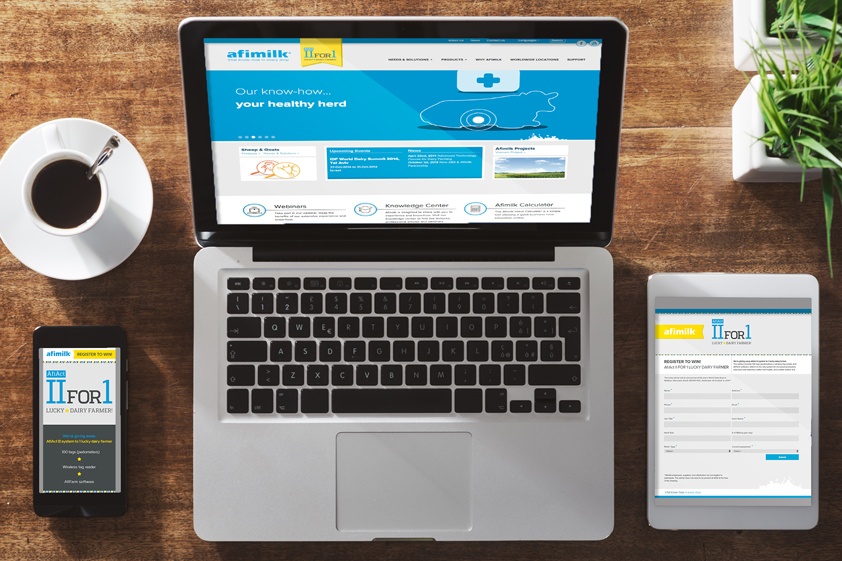

 Follow up afterwards with either a thank you or a newsletter that recalls the event. If you blogged about the event, include those posts in the newsletter as well.
Follow up afterwards with either a thank you or a newsletter that recalls the event. If you blogged about the event, include those posts in the newsletter as well.
1. The More Targeted the Event, the Better
At an industry conference, you want your booth and company to really stand out among the others. The larger the conference and broader the topic, the more challenging it will be for your product to grab the attention of potential customers. One of our customers, Elcam Medical, for instance, started to see fantastic results after attending more targeted events. After undergoing a branding process which sought to position the company as experts in ensuring safety in the hospital environment, they understood that they were marketing not only to their supplier, but also to their end user -- ICU nurses. You can read more about Elcam's success in integrating online and offline marketing strategies here>> As a result, instead of attending the usual larger medical conferences and trade shows, they began to attend more targeted professional conferences of nurses, albeit with a smaller booth. Since the subject was so targeted, Elcam Medical was often able to generate awareness of their product by speaking on the lecture panel at the conference.2. Be Really Clear About Your Inbound Goals
Make sure everyone in your marketing department is working together towards the same goals. Your inbound marketing activity before, during, and after events can support your greater marketing strategy of lead generation by:- Increasing both direct and indirect traffic to your company website
- Increasing the number of email or blog subscribers
- Educating potential customers about your specific product or service
- Increase the number of requests for a product demo
3. Identify your Call-to-Action (CTA)
A call-to-action, or CTA, is an action which you want potential customers to take. This is the method by which you achieve your goal, which you've properly defined in #2. Your CTA could be to convince potential customers to register for the event, download your ebook or white paper, sign up for your webinar, take a survey, or just visit your latest product or service page. By convincing potential customers to take this action, you are driving them further along the sales cycle. Other parts of your company can benefit from trade shows as well, so it is important to sit down and brainstorm with management in different departments to get their input. One of our clients, Afimilk, decided that in order to promote their new product, the AfiAct II at the World Dairy Expo, they would run a lottery during the event to give away the product to one lucky registrant for free. We integrated a CTA into all of their marketing materials for this event, adding it to the Afimilk website homepage, and creating landing page dedicated to registrations specifically for the event.
4. Create a Dedicated Landing Page to Promote your Event
The best landing pages promote events before and after the event. How? Before the event, they help to schedule appointments with your sales and marketing team, explain exactly what your company will be doing at the event, and promote a particular product or service. After the event, they publish reactions and insights from the event as well as the speaker's presentations on the landing page. Another purpose of your dedicated landing page before the event can be to get specific info from potential customers in order for your sales team to qualify them. But in an environment where you are competing with many other companies for the attention of the same people, you'll need to stand out from the crowd. Why would they want to give you information about themselves? You'll have to offer them something in return. Think really hard about what your potential customer's pain point is and how you can help them – for free, in exchange for their contact information. Here's an example from one of our customers, Plastopil, where we inspired customers to register to an event by offering them a free iPad mini:
5. Promote Your Event via Email Marketing
Invite your contacts to the event with an email beforehand, sending them to your dedicated landing page in order to register for the event or schedule appointments, educating them about your services and products, or offering them a free ebook or white paper to show them you understand (and have a solution to) their main pain point. You may want to send an email promoting the event several times beforehand – perhaps a month, two weeks, and then the week of the event. Follow up afterwards with either a thank you or a newsletter that recalls the event. If you blogged about the event, include those posts in the newsletter as well.
Follow up afterwards with either a thank you or a newsletter that recalls the event. If you blogged about the event, include those posts in the newsletter as well.
6. Combining Online and Offline for Maximum Results
A major goal in B2B conferences is to build new business relationships and strengthen old ones, both of which are key in lead generation. This offline approach should not be underestimated. However, you can use inbound marketing to gain the attention of new potential business partners, educate them about your products and services, and have that first meeting be as effective as possible.Overcoming Global Borders
By
Dina Gidron
, 14/05/2017
A Case Study in Effective Online and Offline Marketing. Trends in online marketing, Microtargeting, mobile, content, Amplification and Old-school marketing
min read
A Case Study in Effective Online and Offline Marketing
Note: This is the last of a 5-part series on our annual international B2B marketing conference this past November. Read Part 4 here. As VP Strategy at Oz Branding, I decided to share our experience with Elcam Medical at the Global Marketing Challenges for B2B Companies conference, as it demonstrated the importance of combining both online and offline marketing approaches. Before delving into the Elcam Medical case study at the conference, howev er, I thought it important to remind you of five important trends in online marketing:- Microtargeting – which involves finding a specific subset of customers in your marketplace
- Mastery of mobile – Mobile will dominate your market, no matter what the industry.
- Quality content – You'll need to fill that mobile channel with quality content, not to mention all of your other channels (and differentiate between these channels).
- Amplification – You'll also want to figure out how to amplify that content so it reaches as many potential customers as possible.
- Old-school marketing – Nothing beats face-to-face interaction.
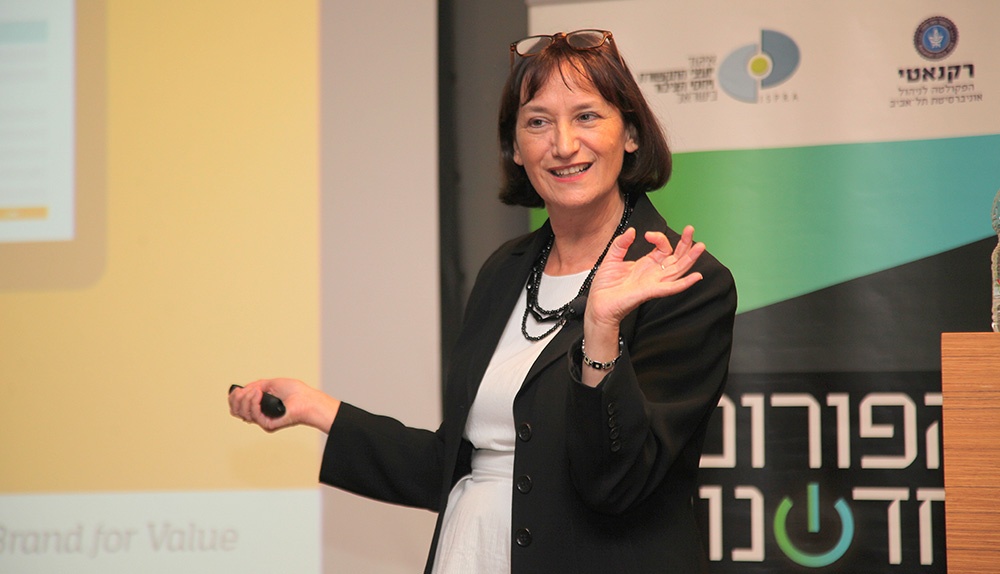
Elcam Medical– No Longer "Just" an OEM
Now that we have those trends in mind, I want to introduce you to Elcam Medical, a medical device company that is a world leader in medical stopcocks. This fluid control application is part of a larger set sold to a hospital through a multinational company. Elcam Medical, whose humble beginnings started at Kibbutz Baram, is a well-known OEM in the medical device industry. The challenge is creating awareness of the product to the end user who benefit from the patient safety and time-savings measures the device offers. Once the end users recognized the brand more, they would be able to create additional demand from the market, rather than relying solely on OEM representatives that may have a different agenda. How then could Elcam Medical go about positioning itself to be recognized more by the end users, in this case, ICU nurses in the medical device equipment industry? Oz Branding has been working with Elcam Medical for the past 4 years. In this case, we helped them devise a two-pronged strategy. The first challenge was to identify and understand their end user, a microtarget of ICU nurses, and develop channels to communicate with them. The second was to continue to strengthen its brand recognition with big multi-national companies, who are purchasers of Elcam Medical, but are familiar with it only as an OEM.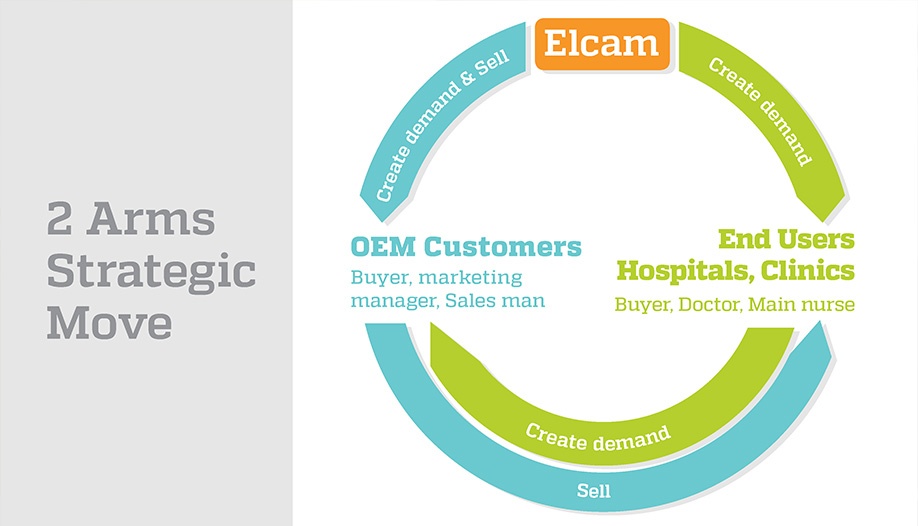 The purpose of this two-pronged strategy was to create demand with regular companies, and spark a conversation of why this product's value is high enough to justify raising its price. With increased demand generation, sales would rise.
The purpose of this two-pronged strategy was to create demand with regular companies, and spark a conversation of why this product's value is high enough to justify raising its price. With increased demand generation, sales would rise.
A Risky Yet Effective Strategy
The approach Oz built with them was dramatic and involved big decisions. In truth, multi-national companies don't want suppliers talking to customers. The question became how Elcam Medical would implement its strategy without damaging customer relations. First, all project work was done with complete transparency between Elcam Medical and its customers. The customers understood Elcam Medical would not sell directly to the hospitals and since there was no conflict of interest, sales have increased as a result of this project. Secondly, the idea was to focus on a concept of concern to end-users which wouldn't affect the suppliers. Fortunately, this concept had already been thought of and built into the product and reflected in the Marvelous stopcock, specially designed to increase safety and save precious time for the critical care teams. In order to have this concept strengthen the entire brand rather than one specific product, a designated website was created to promote Elcam Medical's most important feature for the ICU nurses: patient safety. This turned out to be the main benefit for end users. They wanted to know: How did Elcam Medical ensure patient safety? That became the agenda of the website – to position Elcam Medical as experts in insuring safety in the hospital environment, especially within the ICU.
As new products develop they will also be shown on the website. More than just a promotion of the company's latest technology, the website helps to share a lot of professional data and information among medical professionals.
In order to identify the issues and concerns Elcam Medical's end users face, 12 LinkedIn groups were identified and scoured. Blog articles were written and posted to this website addressing these topics and continue to be expanded upon. For even wider distribution and increased awareness, professional online publications are approached with these same topics, helping to position Elcam Medical as leaders in patient safety.
This turned out to be the main benefit for end users. They wanted to know: How did Elcam Medical ensure patient safety? That became the agenda of the website – to position Elcam Medical as experts in insuring safety in the hospital environment, especially within the ICU.
As new products develop they will also be shown on the website. More than just a promotion of the company's latest technology, the website helps to share a lot of professional data and information among medical professionals.
In order to identify the issues and concerns Elcam Medical's end users face, 12 LinkedIn groups were identified and scoured. Blog articles were written and posted to this website addressing these topics and continue to be expanded upon. For even wider distribution and increased awareness, professional online publications are approached with these same topics, helping to position Elcam Medical as leaders in patient safety.
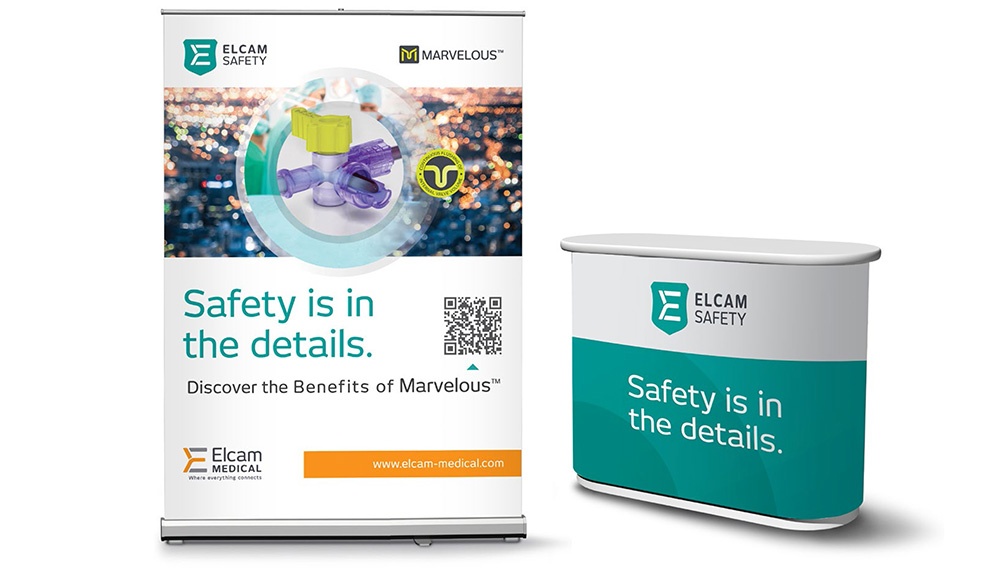
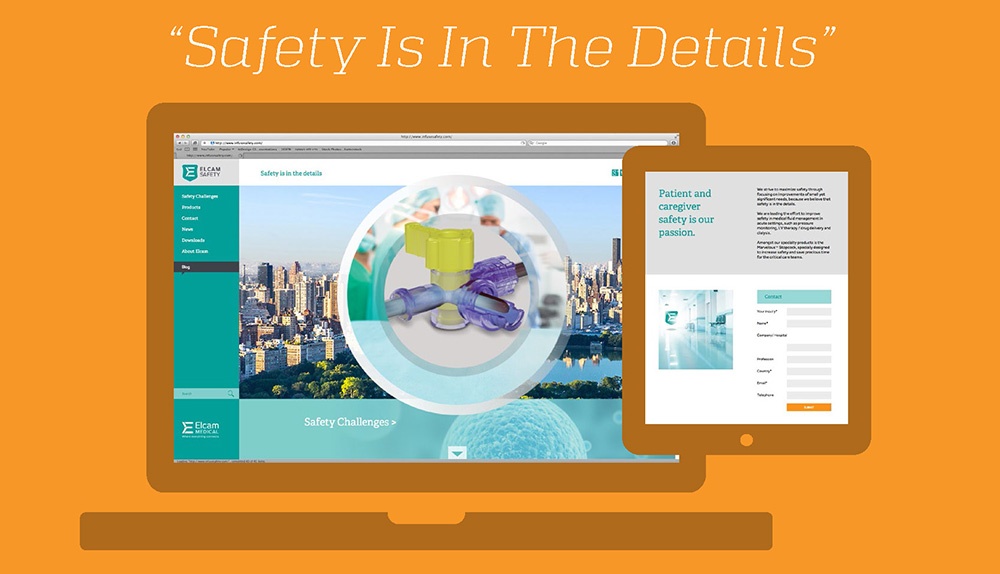
Online and Offline Equals 100% Success
The best approach combines online and offline marketing. Simply put: You have to get out there. In contrast to attending the usual larger medical conferences and big trade shows, Elcam Medical started to attend more targeted professional conferences of nurses, albeit with a smaller booth. Whenever possible, they tried to generate awareness by getting on the lecture panel at the conference. Of course, paid online advertising promoting these conferences helped, but at the end of the day, online activity leads to offline activity, which leads to a personal relationship. As a result of this two-pronged branding strategy, many personal relationships have developed, both between Elcam Medical and the end user, as well as between Elcam Medical and suppliers. As an example of the results generated from this type of online and offline approach, I read an email we received from a big company representative who wrote to one of Elcam Medical's representatives she had met at a critical-care nursing conference: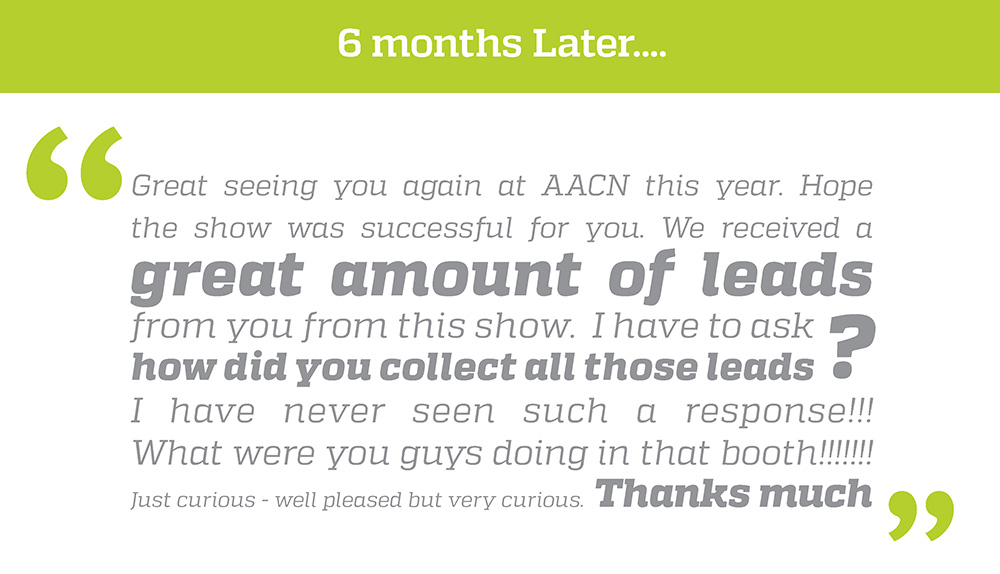
This email was sent just 6-8 months into the branding process, the results are still in process.
The shift is dramatic in that it has changed the rules of the game – Elcam Medical now talks to nurses directly, creating its own relationships with the end user, which in this case, resulted in a huge amount of leads from one particular nursing conference. It shouldn't be a surprise that sales increased by 35% in 2015, the same year that Oz started working with Marvelous. As a takeaway from the conference, I believe that this combination of online marketing and the creation of offline personal connections can move many Israeli companies further into the international marketplace than they are today. As they expand and move abroad, I'd like companies to remember this combined approach when considering how to overcome global borders.
This is the last post in our series about the annual international B2B marketing conference this past November.
As a takeaway from the conference, I believe that this combination of online marketing and the creation of offline personal connections can move many Israeli companies further into the international marketplace than they are today. As they expand and move abroad, I'd like companies to remember this combined approach when considering how to overcome global borders.
This is the last post in our series about the annual international B2B marketing conference this past November.
Growing Your Brand in the USA: Key Success Factors
By
Orit Oz
, 14/05/2017
Matt Bowen, shared with us at the Global Marketing Challenges for B2B Companies the key success factors for Israeli companies to scale their product in the U.S.
min read
Note: This is Part 4 of a 5-part series on our annual international B2B marketing conference this past November. Read Part 3 here.
Matt Bowen, President and CEO of Aloft Group, shared with us at the Global Marketing Challenges for B2B Companies the key success factors for Israeli companies to scale their product in the U.S. Mr. Bowen cited this article from Harvard business review which noted that in a survey of 112 Israeli companies founded between 1996 and 2013 that met or exceeded $20 million in revenue, most shared two common characteristics. The vast majority – 91% -- had both Israeli CEOs and had received funding from foreign VCs.
Mr. Bowen cited this article from Harvard business review which noted that in a survey of 112 Israeli companies founded between 1996 and 2013 that met or exceeded $20 million in revenue, most shared two common characteristics. The vast majority – 91% -- had both Israeli CEOs and had received funding from foreign VCs.
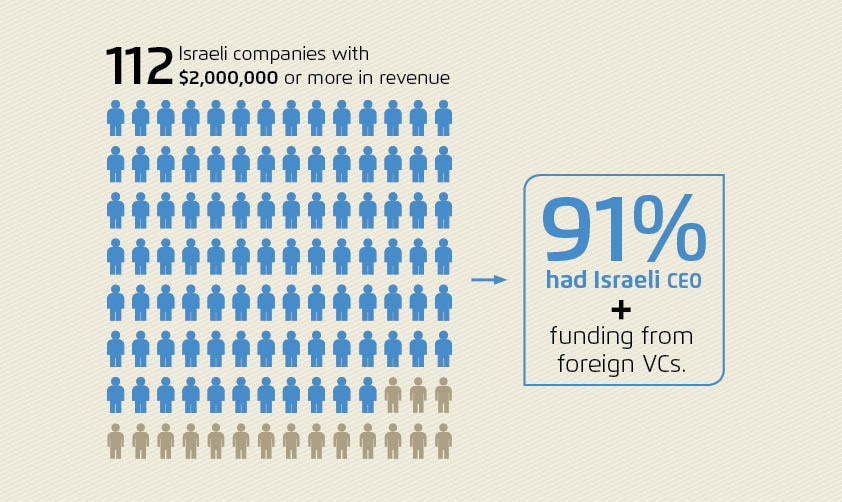 Mr. Bowen believes that in addition to these factors, Israeli companies that desire to successfully penetrate the US market must be truly remarkable. We'll examine three key factors that contribute to a company's "remarkability" in this post.
Mr. Bowen believes that in addition to these factors, Israeli companies that desire to successfully penetrate the US market must be truly remarkable. We'll examine three key factors that contribute to a company's "remarkability" in this post.

 While the US market offers a lot of exciting opportunity for growth for any Israeli company, it is also quite diverse. The market forces can create a lot of voices, as well as choices, and your company's brand needs to be able to be heard above the noise. Mr. Bowen showed us how his company was able to zoom and focus on the market for one client, Greiner Packing, by creating customer personas. By focusing on specific personas and understanding what these personas do on a typical day, their pain points, values and possible objections to the product, his company gained a much clearer focus of who would benefit from the product and how. Here's a detailed example of a customer persona:
While the US market offers a lot of exciting opportunity for growth for any Israeli company, it is also quite diverse. The market forces can create a lot of voices, as well as choices, and your company's brand needs to be able to be heard above the noise. Mr. Bowen showed us how his company was able to zoom and focus on the market for one client, Greiner Packing, by creating customer personas. By focusing on specific personas and understanding what these personas do on a typical day, their pain points, values and possible objections to the product, his company gained a much clearer focus of who would benefit from the product and how. Here's a detailed example of a customer persona:
 From this type in-depth understanding of your customers, you can start to build your company's story more clearly.
From this type in-depth understanding of your customers, you can start to build your company's story more clearly.
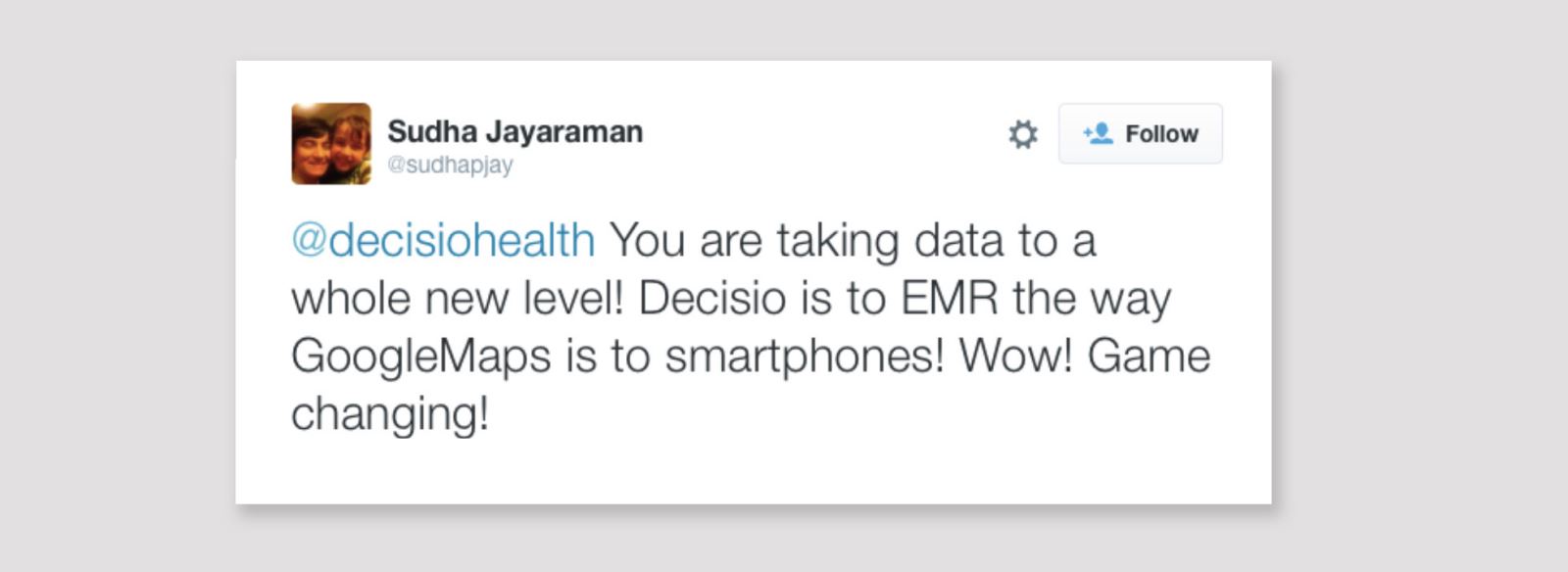
 Mr. Bowen believes that in addition to these factors, Israeli companies that desire to successfully penetrate the US market must be truly remarkable. We'll examine three key factors that contribute to a company's "remarkability" in this post.
Mr. Bowen believes that in addition to these factors, Israeli companies that desire to successfully penetrate the US market must be truly remarkable. We'll examine three key factors that contribute to a company's "remarkability" in this post.

Step 1 – Zoom and Focus
 While the US market offers a lot of exciting opportunity for growth for any Israeli company, it is also quite diverse. The market forces can create a lot of voices, as well as choices, and your company's brand needs to be able to be heard above the noise. Mr. Bowen showed us how his company was able to zoom and focus on the market for one client, Greiner Packing, by creating customer personas. By focusing on specific personas and understanding what these personas do on a typical day, their pain points, values and possible objections to the product, his company gained a much clearer focus of who would benefit from the product and how. Here's a detailed example of a customer persona:
While the US market offers a lot of exciting opportunity for growth for any Israeli company, it is also quite diverse. The market forces can create a lot of voices, as well as choices, and your company's brand needs to be able to be heard above the noise. Mr. Bowen showed us how his company was able to zoom and focus on the market for one client, Greiner Packing, by creating customer personas. By focusing on specific personas and understanding what these personas do on a typical day, their pain points, values and possible objections to the product, his company gained a much clearer focus of who would benefit from the product and how. Here's a detailed example of a customer persona:
 From this type in-depth understanding of your customers, you can start to build your company's story more clearly.
From this type in-depth understanding of your customers, you can start to build your company's story more clearly.
Step 2 - Tell a Bigger Story
From his vast experience in the field, Mr. Bowen told us: "Companies that seek to enter the US market successfully need a bigger story." That also means not overly focusing on your products or technology, but how it can make your customer's lives better. It's the customer's emotional connection to the brand that ultimately builds your customer relationships and brand loyalty.Step 3 - Cultivate Relationships to Inspire Brand Loyalty
Brand loyalty is a goal that is achieved by a journey - a journey with each customer. Through focusing and zooming in on your market and telling the right story, you'll start to build relationships. Customers with good experiences will be happy to share it with the world, especially if they believe in your product. Many of these relationships will develop into brand advocates and slowly build your brand and customer loyalty.
To Make it In America, Be Remarkable
As we've explained, there are three key factors to successfully entering the US market. First, your company must focus and zoom in on its market. Creating in-depth customer personas can help with this. Secondly, you'll need to come up with a way to tell a "bigger story" – one that doesn't focus too much on your products and technology, but how it will add value to your customer's life. Finally, you'll need to build relationships with customers based on exceptional customer experiences in order to create brand advocates and loyalty. These three factors can go a long way in making your company truly remarkable and successfully scale in the US.From Israel to Global: Lessons Learned in Building a Global Brand
By
Orit Oz
, 14/05/2017
Mr. Eyal Tryber,CEO of Maytronics and former CMO, talks about the lessons learned from his own first-hand experience, from building a global brand
min read
Note: This is Part 3 of a 5-part series highlighting the speakers from our annual international B2B marketing conference this past November. Read Part 2 here.
At the Global Marketing Challenges for B2B Companies conference we had the distinct pleasure to hear from Mr. Eyal Tryber, CEO of Maytronics, about the lessons he and his company learned from building a global brand. As the former VP of Sales and Marketing at Maytronics for over seven years before his appointment as the CEO in May of this year, these lessons are from his own first-hand experience.
 Let's start off with a bit of background about the company. A company with humble beginnings – it was founded on Kibbutz Yizreel in Northern Israel in 1983 – Maytronics has come a long way in the automated pool cleaning market. With over a billion shekels in market value, over 400 employees and operations in 46 countries and more than one million pool-cleaning robots sold, Maytronics is now a prosperous global company. The company is publicly traded both on the NASDAQ and the Tel Aviv Stock Exchange.
After going public in 2004, the company embarked on a new marketing strategy: creating anchors in strategic markets. Company branches were established in Argentina, the US, France, Australia and Spain. Their strategy paid off as the company began to achieve unprecedented growth. As it grew, however, new challenges arose. First, each company branch started to create its own multi-culture, which created tension between local and global brands. Secondly, as the company grew, it risked losing its unique Maytronics company culture – stemming from its humble Israeli kibbutz origin and culture.
Let's start off with a bit of background about the company. A company with humble beginnings – it was founded on Kibbutz Yizreel in Northern Israel in 1983 – Maytronics has come a long way in the automated pool cleaning market. With over a billion shekels in market value, over 400 employees and operations in 46 countries and more than one million pool-cleaning robots sold, Maytronics is now a prosperous global company. The company is publicly traded both on the NASDAQ and the Tel Aviv Stock Exchange.
After going public in 2004, the company embarked on a new marketing strategy: creating anchors in strategic markets. Company branches were established in Argentina, the US, France, Australia and Spain. Their strategy paid off as the company began to achieve unprecedented growth. As it grew, however, new challenges arose. First, each company branch started to create its own multi-culture, which created tension between local and global brands. Secondly, as the company grew, it risked losing its unique Maytronics company culture – stemming from its humble Israeli kibbutz origin and culture.
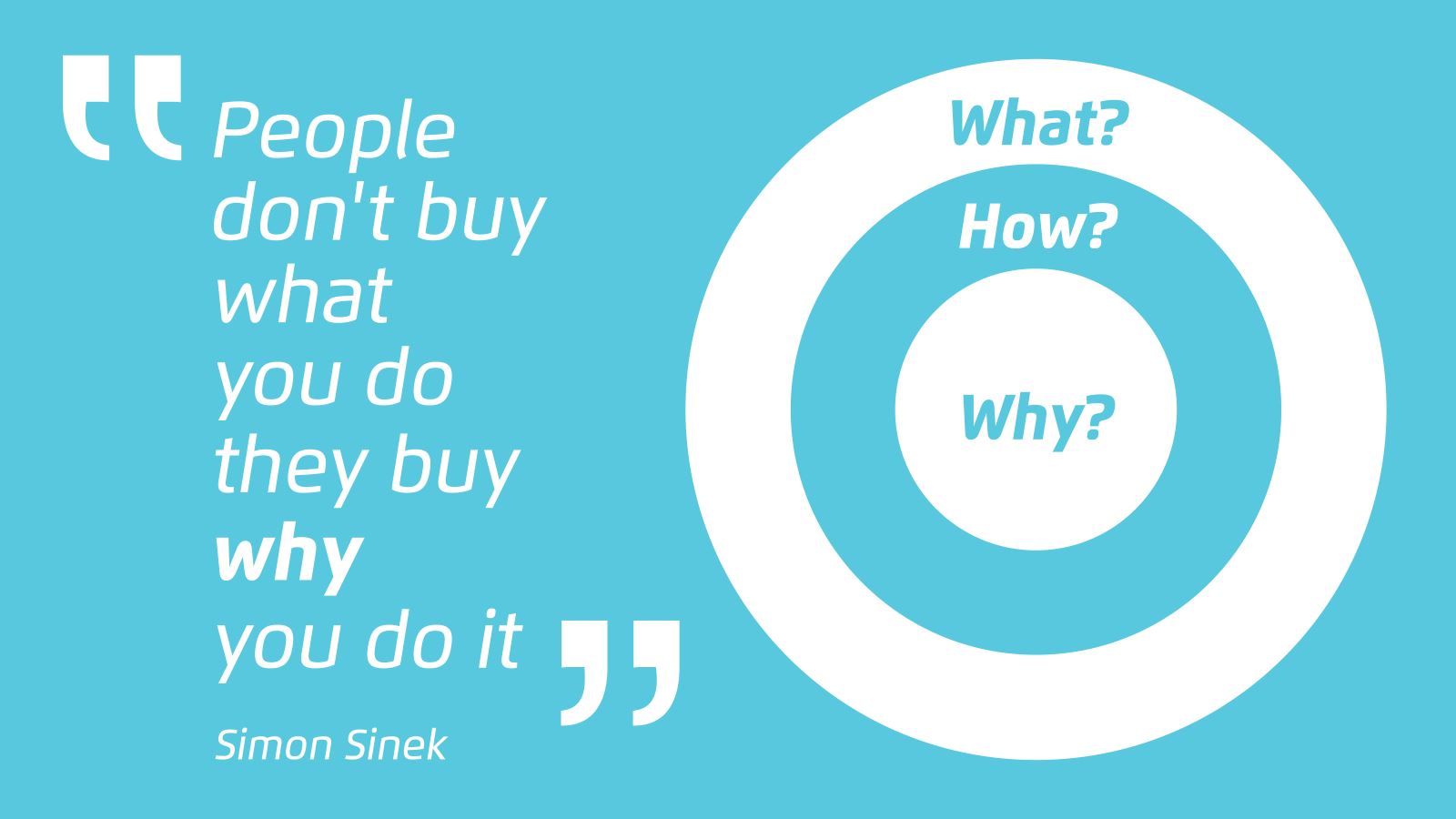 What are Maytronics' core values? Most importantly, the company believes in focusing on the customer. Along with this are professional values of integrity and fairness. Together these are the internal values, or company culture, of Maytronics.
What are Maytronics' core values? Most importantly, the company believes in focusing on the customer. Along with this are professional values of integrity and fairness. Together these are the internal values, or company culture, of Maytronics.
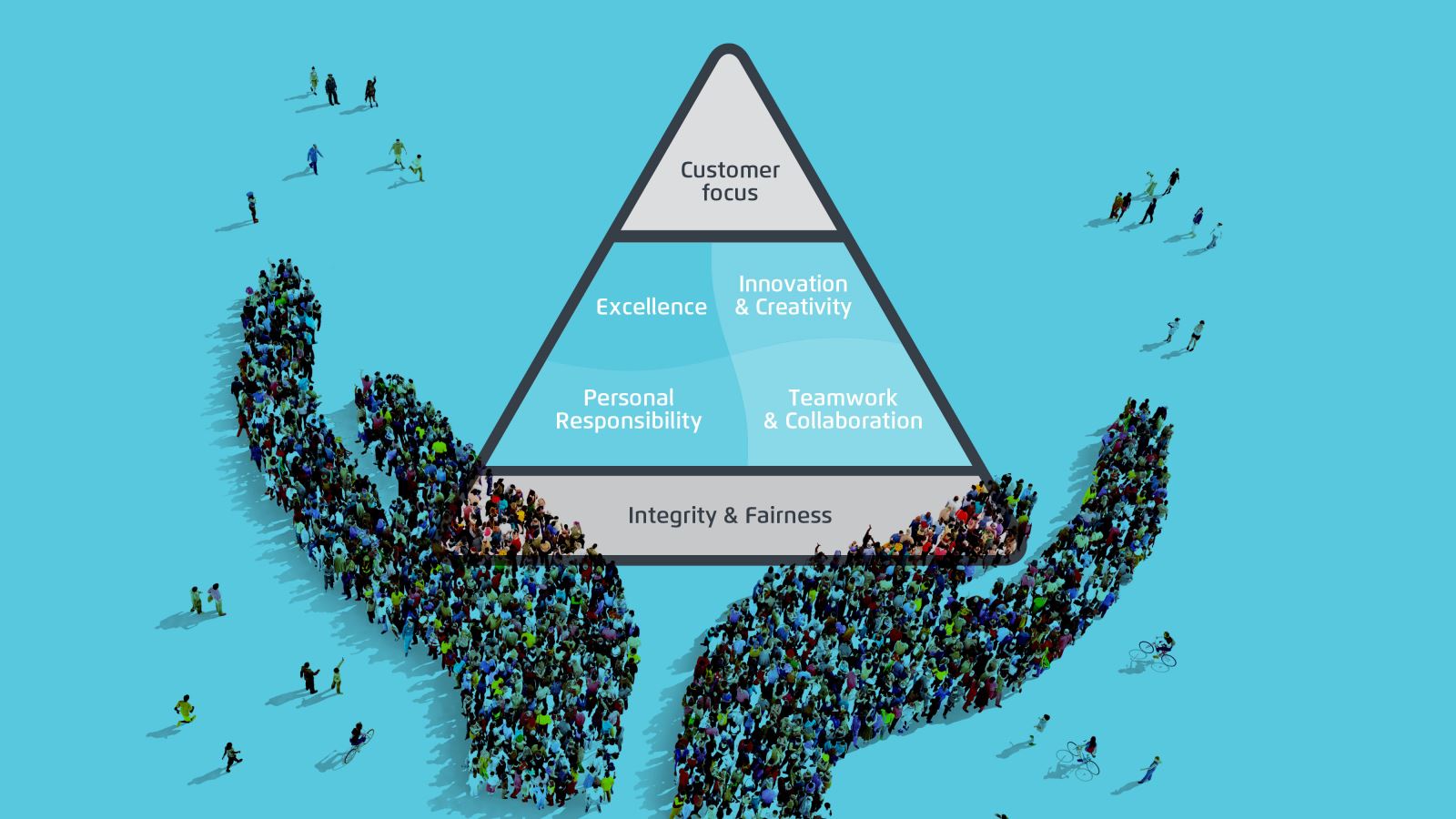 Other values, while important, are components assisting in delivering these primary values. Although Maytronics develops pool cleaning robots, this alone doesn't fully encapsulate the company's purpose. As Mr. Tryber stated in his talk at the conference: "We don't sell robots, we sell an exceptional customer experience."
Other values, while important, are components assisting in delivering these primary values. Although Maytronics develops pool cleaning robots, this alone doesn't fully encapsulate the company's purpose. As Mr. Tryber stated in his talk at the conference: "We don't sell robots, we sell an exceptional customer experience."
 Oz successfully transformed the company's internal values, or company culture, flipping them to discover the other side of the coin: the company's brand.
Oz successfully transformed the company's internal values, or company culture, flipping them to discover the other side of the coin: the company's brand.
 Let's start off with a bit of background about the company. A company with humble beginnings – it was founded on Kibbutz Yizreel in Northern Israel in 1983 – Maytronics has come a long way in the automated pool cleaning market. With over a billion shekels in market value, over 400 employees and operations in 46 countries and more than one million pool-cleaning robots sold, Maytronics is now a prosperous global company. The company is publicly traded both on the NASDAQ and the Tel Aviv Stock Exchange.
After going public in 2004, the company embarked on a new marketing strategy: creating anchors in strategic markets. Company branches were established in Argentina, the US, France, Australia and Spain. Their strategy paid off as the company began to achieve unprecedented growth. As it grew, however, new challenges arose. First, each company branch started to create its own multi-culture, which created tension between local and global brands. Secondly, as the company grew, it risked losing its unique Maytronics company culture – stemming from its humble Israeli kibbutz origin and culture.
Let's start off with a bit of background about the company. A company with humble beginnings – it was founded on Kibbutz Yizreel in Northern Israel in 1983 – Maytronics has come a long way in the automated pool cleaning market. With over a billion shekels in market value, over 400 employees and operations in 46 countries and more than one million pool-cleaning robots sold, Maytronics is now a prosperous global company. The company is publicly traded both on the NASDAQ and the Tel Aviv Stock Exchange.
After going public in 2004, the company embarked on a new marketing strategy: creating anchors in strategic markets. Company branches were established in Argentina, the US, France, Australia and Spain. Their strategy paid off as the company began to achieve unprecedented growth. As it grew, however, new challenges arose. First, each company branch started to create its own multi-culture, which created tension between local and global brands. Secondly, as the company grew, it risked losing its unique Maytronics company culture – stemming from its humble Israeli kibbutz origin and culture.
Bridging Gaps in Cultural Differences While Sustaining Continuous Growth
And thus, Maytronics embarked on an international organization process with Oz. Oz carried out this process in two ways. First, it enhanced the company dialog in order to form one distinct Maytronics company culture. This in turn helped build a strong global brand with a highly committed team located all over the world. Or as Tony Hsieh, CEO of Zappos put it: "We believe that your company's culture and your company's brand are really just two sides of the same coin." In order to form this distinct company brand and culture, Oz and Maytronics brainstormed together a list of its core values, applying the "Golden Circle" concept of Simon Sinek. According to this concept, products (the what) and the development (the how) serve to achieve a company purpose (the why). This also assists in creating an understanding of the company's competitive edge in the marketplace. What are Maytronics' core values? Most importantly, the company believes in focusing on the customer. Along with this are professional values of integrity and fairness. Together these are the internal values, or company culture, of Maytronics.
What are Maytronics' core values? Most importantly, the company believes in focusing on the customer. Along with this are professional values of integrity and fairness. Together these are the internal values, or company culture, of Maytronics.
 Other values, while important, are components assisting in delivering these primary values. Although Maytronics develops pool cleaning robots, this alone doesn't fully encapsulate the company's purpose. As Mr. Tryber stated in his talk at the conference: "We don't sell robots, we sell an exceptional customer experience."
Other values, while important, are components assisting in delivering these primary values. Although Maytronics develops pool cleaning robots, this alone doesn't fully encapsulate the company's purpose. As Mr. Tryber stated in his talk at the conference: "We don't sell robots, we sell an exceptional customer experience."
 Oz successfully transformed the company's internal values, or company culture, flipping them to discover the other side of the coin: the company's brand.
Oz successfully transformed the company's internal values, or company culture, flipping them to discover the other side of the coin: the company's brand.
Drastic Results Which are Just the Beginning
The branding process with Maytronics was successful in that it quickly unified the global team, facilitating increased teamwork and collaboration. In addition, its company collateral and imaging are consistent both globally and locally. Although these results were the most immediate, the new branding left an impact which will be felt in the company, both internally and externally, for the long-term future as well.Getting Over the Great Wall: Marketing Successes and Failures in China
By
Orit Oz
, 14/05/2017
Mike Golden, CEO of Adsmith, gave us some tips at the B2B International Conference about what to do (and what not to do) when marketing your brand in China.
min read
Note: This is Part 2 of a 5-part series highlighting the speakers from our annual international B2B marketing conference this past November. Read Part 1 here.
Mike Golden, CEO of Adsmith China, gave us some tips at the B2B International Conference 2015 this November about what to do (and what not to do) when marketing your brand in China. This country of 1.3 billion people and an estimated 6.5% growth for the next five years (and that's slow!) offers an exciting opportunity for global brands.
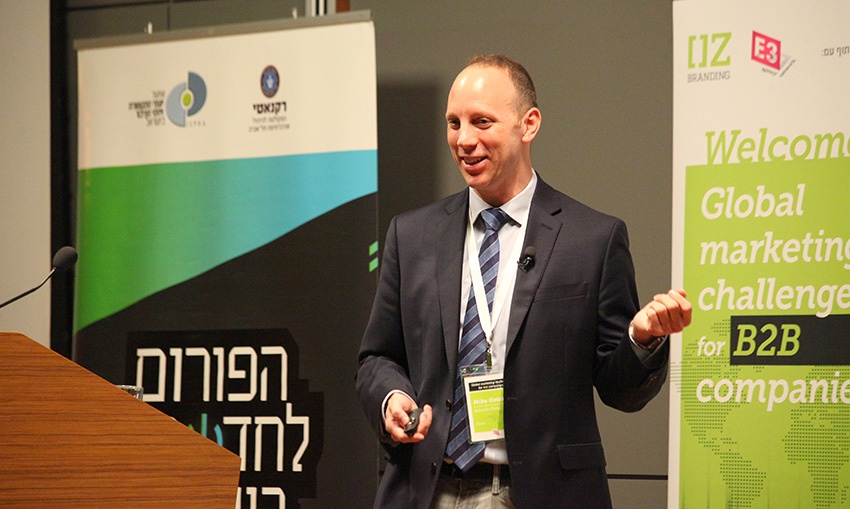
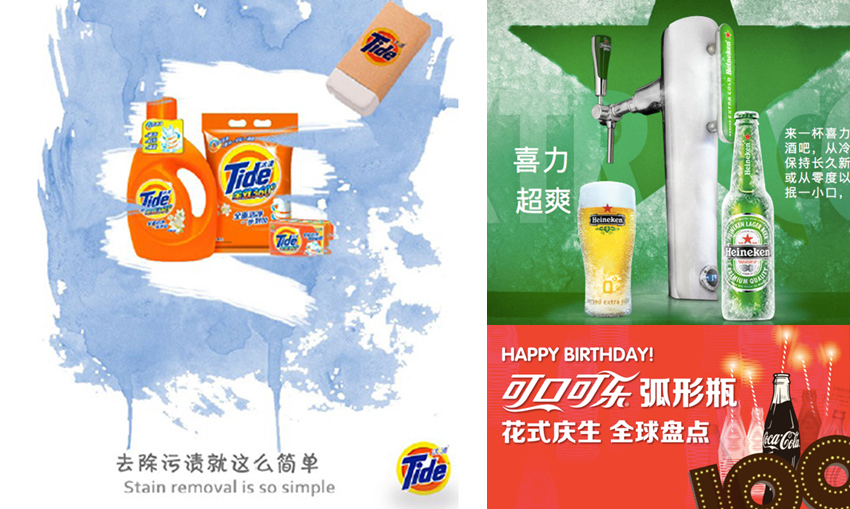 He told a cautionary tale of a luxury brand company that decided they didn't need a name in China. As a result, newspapers came up with their own competing versions of the same brand. At one point, people started to trademark those names. That's another reason why it's so important to create a Chinese version of your company name. If you don't do it, someone else will.
He told a cautionary tale of a luxury brand company that decided they didn't need a name in China. As a result, newspapers came up with their own competing versions of the same brand. At one point, people started to trademark those names. That's another reason why it's so important to create a Chinese version of your company name. If you don't do it, someone else will.
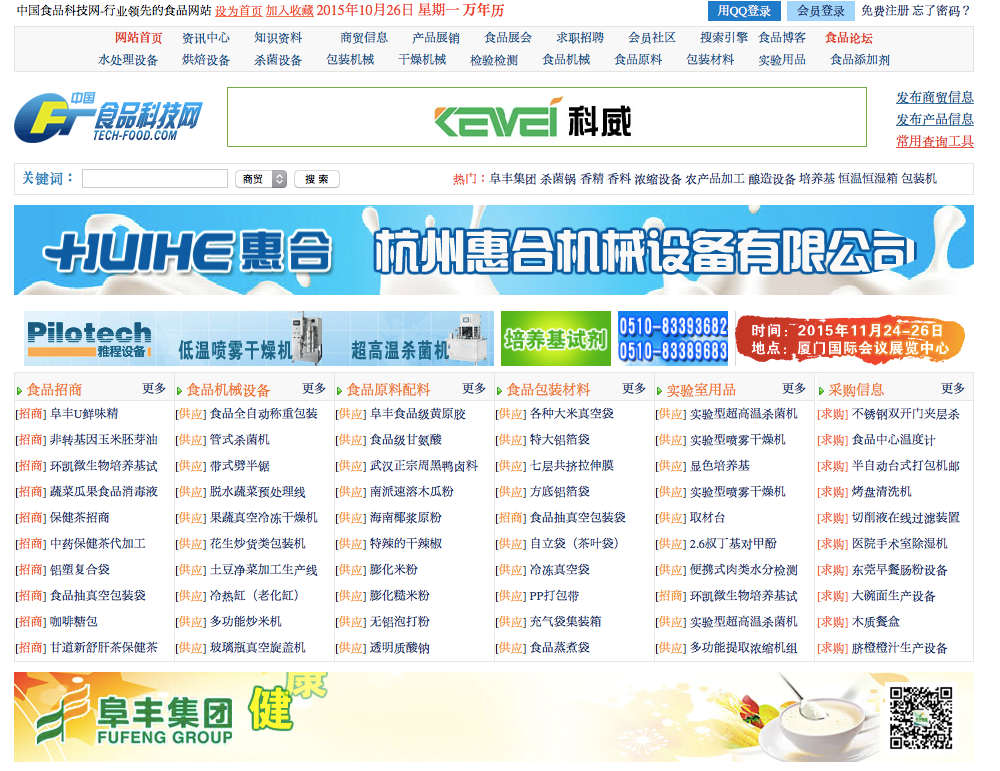 Fortunately, his company is successful at transforming Chinese versions of websites into clean, white homepages. One example he showed us was Lycored, a company specializing in food ingredients. They were able to localize the Chinese version of their website with images while at the same time create a nice, clean homepage:
Fortunately, his company is successful at transforming Chinese versions of websites into clean, white homepages. One example he showed us was Lycored, a company specializing in food ingredients. They were able to localize the Chinese version of their website with images while at the same time create a nice, clean homepage:
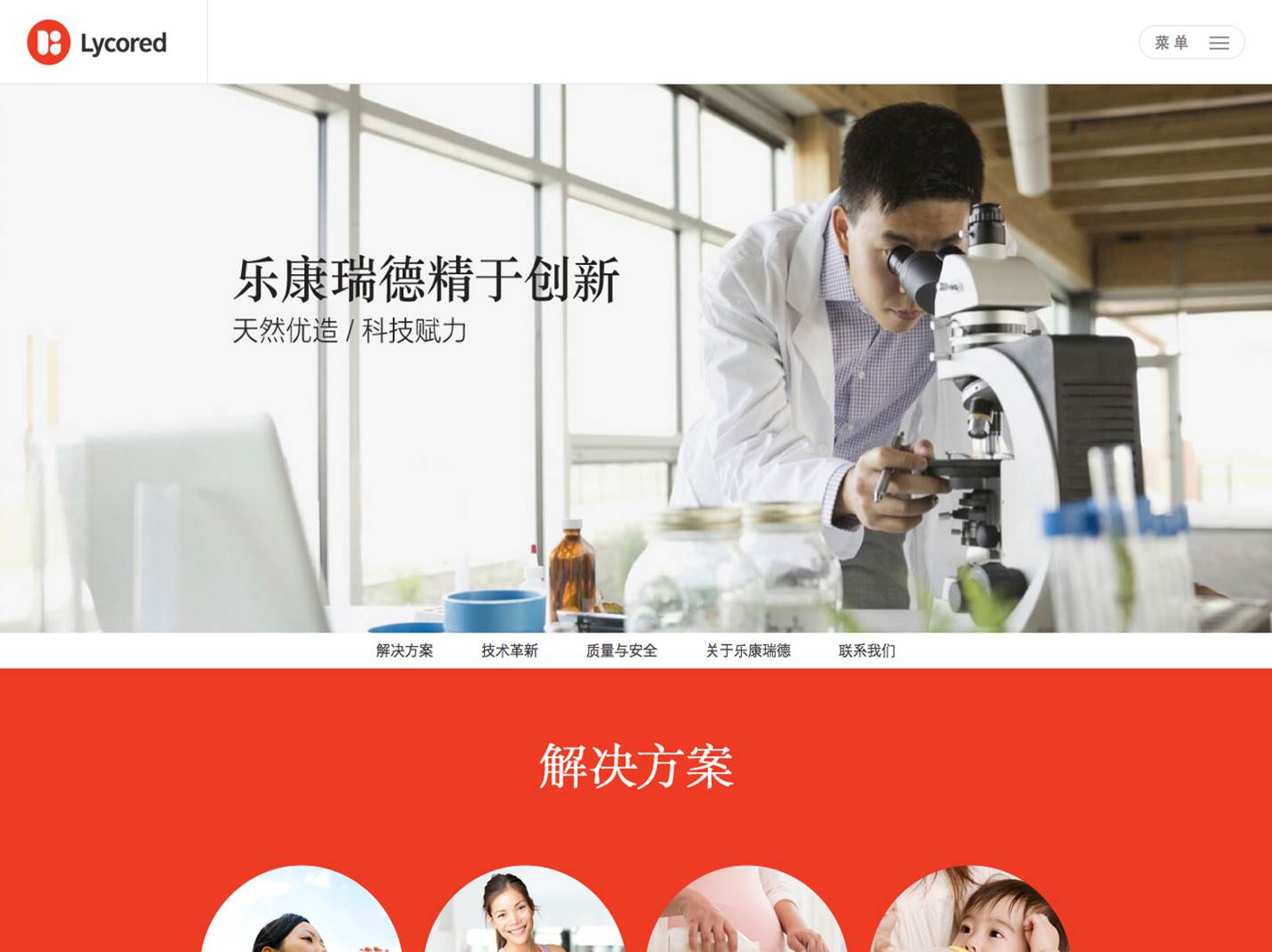 "No one was talking about the threat of resistance. It was an invisible threat – but once it appeared, it was already too late. We gave this threat a face and a name, so people could start talking about it," Mr. Asset explained. "There's an old saying, `If you want to own the solution, you have own the problem.' So we were the ones to start talking about it."
They were also able to use a lot of red. Red is a very lucky color in China, Mr. Golden explained, so it was great that Lycored uses red.
"No one was talking about the threat of resistance. It was an invisible threat – but once it appeared, it was already too late. We gave this threat a face and a name, so people could start talking about it," Mr. Asset explained. "There's an old saying, `If you want to own the solution, you have own the problem.' So we were the ones to start talking about it."
They were also able to use a lot of red. Red is a very lucky color in China, Mr. Golden explained, so it was great that Lycored uses red.
Fail Small, Fail Large
Although China offers a lot of opportunity, it can also be an overwhelming experience. "Some people come to China to try it for a year. It's a disaster, and they leave. That's a large fail," explains Mr. Golden. "The small fails are going up this very steep learning curve and learning the problems marketing in China." Mr. Bowden then detailed a practical list of marketing challenges companies face when entering the Chinese market and how to alleviate these "small fails."
Challenge #1: No one Can Read or Understand Your Company Name
He brings the example of Heineken and Coca-Cola, who not only create Chinese versions of their names, but made sure that the Chinese characters that formed the words were meaningful and related to the brand as well. For example, Heineken in Chinese means “happy power," and Coca-Cola means "happy mouth He told a cautionary tale of a luxury brand company that decided they didn't need a name in China. As a result, newspapers came up with their own competing versions of the same brand. At one point, people started to trademark those names. That's another reason why it's so important to create a Chinese version of your company name. If you don't do it, someone else will.
He told a cautionary tale of a luxury brand company that decided they didn't need a name in China. As a result, newspapers came up with their own competing versions of the same brand. At one point, people started to trademark those names. That's another reason why it's so important to create a Chinese version of your company name. If you don't do it, someone else will.
Challenge #2: Your Website and Marketing Collateral isn't Localized
One method of localizing all of your marketing collateral is to have it translated into Chinese. But that's not necessarily enough, Mr. Golden warns. The next step is to take the marketing collateral and give it to real Chinese marketing people and copywriters. Good copy is extremely important. Visuals are just as important as copy. While it isn't necessary to completely disregard the global brand, you do need to combine it with some amount of localization. The amount of localization depends on the market and the brand. For B2B companies, you want to strike the right amount of balance between global and local branding. (For an example of localized content, see the example in Challenge #4).Challenge #3: The Great Firewall of China
In terms of the web, China is a particular challenge to global brands, since it blocks many sites such as Google, Twitter and Facebook. Even if your site sits on the same server as a site China has decided to ban, your website page might not load. And according to Mr. Golden, this happens a lot. Make sure people can open and use your website to learn about your company and product.Challenge #4: Creating a Website with Clean White Space
According to Mr. Golden, the Chinese don't seem to appreciate the beauty of clean, white space on their homepages. He gives an example of an online trade magazine which shows the typical layout of many Chinese websites: Fortunately, his company is successful at transforming Chinese versions of websites into clean, white homepages. One example he showed us was Lycored, a company specializing in food ingredients. They were able to localize the Chinese version of their website with images while at the same time create a nice, clean homepage:
Fortunately, his company is successful at transforming Chinese versions of websites into clean, white homepages. One example he showed us was Lycored, a company specializing in food ingredients. They were able to localize the Chinese version of their website with images while at the same time create a nice, clean homepage:
 "No one was talking about the threat of resistance. It was an invisible threat – but once it appeared, it was already too late. We gave this threat a face and a name, so people could start talking about it," Mr. Asset explained. "There's an old saying, `If you want to own the solution, you have own the problem.' So we were the ones to start talking about it."
They were also able to use a lot of red. Red is a very lucky color in China, Mr. Golden explained, so it was great that Lycored uses red.
"No one was talking about the threat of resistance. It was an invisible threat – but once it appeared, it was already too late. We gave this threat a face and a name, so people could start talking about it," Mr. Asset explained. "There's an old saying, `If you want to own the solution, you have own the problem.' So we were the ones to start talking about it."
They were also able to use a lot of red. Red is a very lucky color in China, Mr. Golden explained, so it was great that Lycored uses red.
Challenge #5: Distributing Your Content in China
Since China blocks all of the mainstream sites from the US, it has created Chinese alternatives. Your company will have to familiarize themselves with sites such as Baidu, WeChat, Weibo, and Youku and the differences between them and their US counterparts. The numbers on these sites and networks are huge, Mr. Golden says, but it can still be hard to reach the people. For instance, Baidu, he explains, uses a completely different algorithm than Google. Speed and number of pages are major factor, as are metatags and other factors that Google no longer takes into account. In addition, sites with more pages rank higher. From Mr. Golden's experience, sometimes companies will need to call Baidu personally in order to increase their website's loading time. Trade magazines are another excellent source for distributing content. They can offer cost-effective advertising opportunities, as well as paid advertorial opportunities. Advertising laws, however, are very strict. Any advertising consisting of experts that speak of benefits of a product must be cleared with the Chinese government beforehand or risk being fined.Successful Penetration of the Chinese Market
Mr. Golden ended his presentation by telling companies interested in entering the Chinese market to first ask themselves the following questions:- Is your brand ready to travel? If not, maybe go to a branding company (Oz or one of the E3 partners :P)
- Do you have a solid strategy? Don't go to China just to try it out.
- What are your priorities? Think especially in terms of your geography, people, and target markets.
- What marketing actions are right for your brand and your customers? Do you understand the media your customers are using?
- Do you have all the information you need? It takes talking to a lot of people to find out what's really going on.
Why Marketing in Europe is Like a Polar Bear
By
Orit Oz
, 14/04/2017
There's no blueprint for the perfect European campaign, There's no list of boxes that you can check off. That's why marketing in Europe in like a polar bear
min read
Note: This is Part 1 of a 5-part series highlighting the speakers from our annual international B2B marketing conference this past November. Read the introductory post to this series here.
When our head of VP Strategy at Oz Branding, Dina Gidron, asked Dirk Assent, managing partner at Bernstein, Gmbh to talk about marketing in Europe at the B2B branding conference in November, he admits that he struggled to find material to talk about. "There's no blueprint for the perfect European campaign. There's no list of boxes that you can check off to find out if you're doing wrong or right in Europe. That's why today I'm going to talk to you about why marketing in Europe in like a polar bear," Mr. Assent announced.
Mr. Assent continued to explain that although life in Europe seems quite romantic and uncomplicated, this perception changes when we talk about the European Union.
He explained that although the term "union" implies that it works in coordination with other countries in a unified manner. In reality, the European Union is far from a unified entity, especially as a marketplace. To illustrate this point, he explained that the United States has 300 million people who are unified by the same language. Europe, in contrast, has 500 million people and 23 official languages.
"If you're doing business in Europe as a whole, you have to do whatever you do for the US times 23."
It's an oversimplified example, he admitted, yet it clearly presents the magnitude of the challenge of marketing in Europe.
"There's no blueprint for the perfect European campaign. There's no list of boxes that you can check off to find out if you're doing wrong or right in Europe. That's why today I'm going to talk to you about why marketing in Europe in like a polar bear," Mr. Assent announced.
Mr. Assent continued to explain that although life in Europe seems quite romantic and uncomplicated, this perception changes when we talk about the European Union.
He explained that although the term "union" implies that it works in coordination with other countries in a unified manner. In reality, the European Union is far from a unified entity, especially as a marketplace. To illustrate this point, he explained that the United States has 300 million people who are unified by the same language. Europe, in contrast, has 500 million people and 23 official languages.
"If you're doing business in Europe as a whole, you have to do whatever you do for the US times 23."
It's an oversimplified example, he admitted, yet it clearly presents the magnitude of the challenge of marketing in Europe.
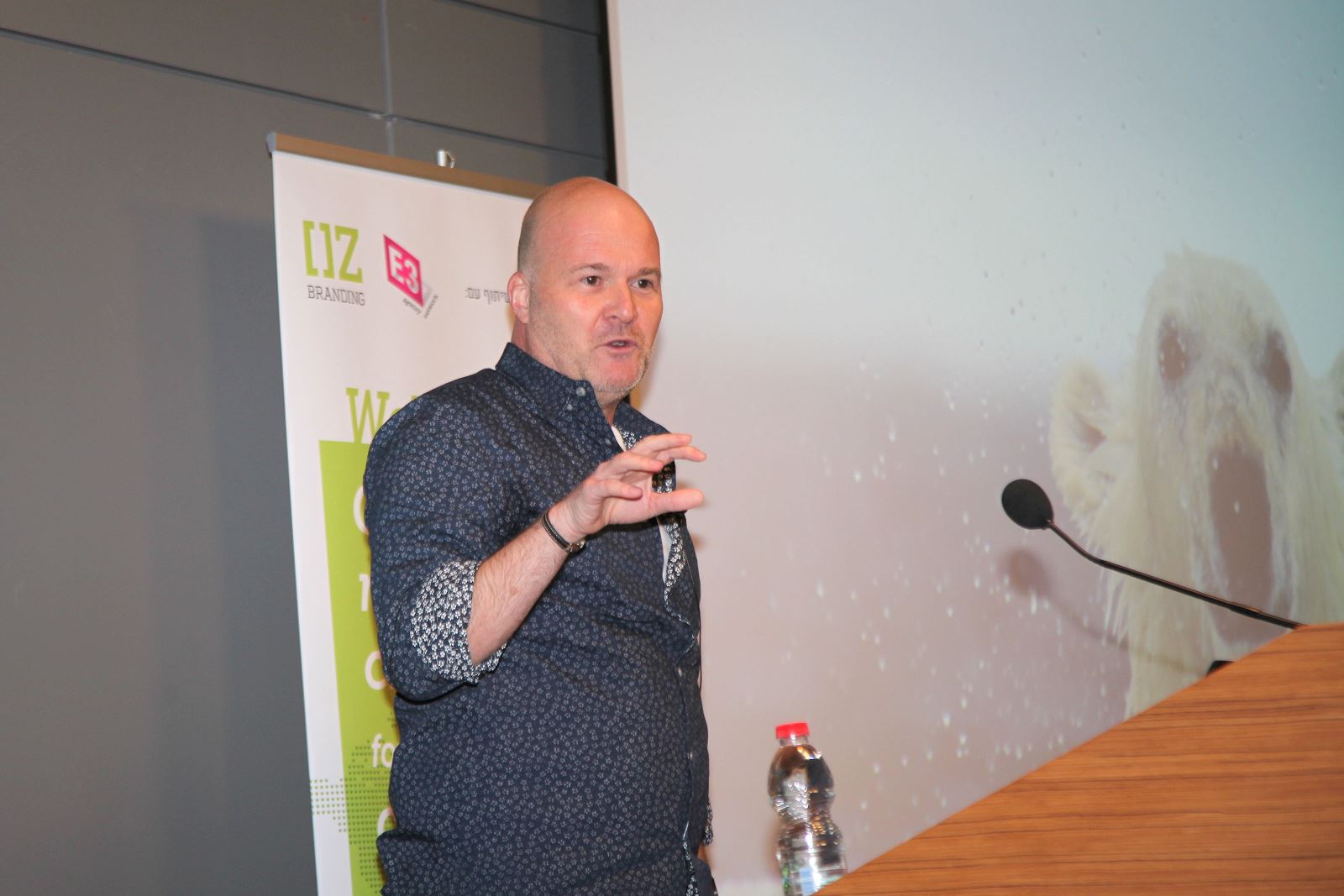 Discovering the Synergies between Different Countries (The Polar Bear Analogy)
Of course, language is only one of the many things dividing the countries. There are also vast social, legal and cultural differences. Instead of harping on these differences, Mr. Asset cautions, they need to be embraced. At the same time, you need to find the common denominator, or synergies, between the many countries.
When marketing in the European Union, he explained, you simply can't create a campaign that tells different groups of people the same story, uses the same pictures, and talks about the same issues.
"It doesn't work, because you aren't embracing the differences", he says. "You have to instead create a flexible structure that adapts to their needs."
At first glance, it seems quite contradictory to try to both embrace differences while adapting to different needs. How can we accomplish this in marketing?
In order to demonstrate how to accomplish this, he made an analogy of marketing in Europe to the anatomical design of a polar bear. At first, Mother Nature asked the polar bear what it wanted to look like, and he requested black skin in order to soak up the sun's rays. Later, the polar bear realized that it might be better to have white skin because there's a lot of snow, since if he's white he'll be protected from his enemies.
Amazingly, Mother Nature found a solution that takes both needs into account. Polar bears have black skins which soak up the sun's rays, and are stored by a layer of blubber underneath this skin. On top of this black skin, the polar bear has a layer of white fur that camouflages him in the snowy climate and helps to keep him safe from his enemies.
He even illustrated Mother Nature's idea of this flexible structure with a diagram of his own (We loved your diagram, Dirk!):
Discovering the Synergies between Different Countries (The Polar Bear Analogy)
Of course, language is only one of the many things dividing the countries. There are also vast social, legal and cultural differences. Instead of harping on these differences, Mr. Asset cautions, they need to be embraced. At the same time, you need to find the common denominator, or synergies, between the many countries.
When marketing in the European Union, he explained, you simply can't create a campaign that tells different groups of people the same story, uses the same pictures, and talks about the same issues.
"It doesn't work, because you aren't embracing the differences", he says. "You have to instead create a flexible structure that adapts to their needs."
At first glance, it seems quite contradictory to try to both embrace differences while adapting to different needs. How can we accomplish this in marketing?
In order to demonstrate how to accomplish this, he made an analogy of marketing in Europe to the anatomical design of a polar bear. At first, Mother Nature asked the polar bear what it wanted to look like, and he requested black skin in order to soak up the sun's rays. Later, the polar bear realized that it might be better to have white skin because there's a lot of snow, since if he's white he'll be protected from his enemies.
Amazingly, Mother Nature found a solution that takes both needs into account. Polar bears have black skins which soak up the sun's rays, and are stored by a layer of blubber underneath this skin. On top of this black skin, the polar bear has a layer of white fur that camouflages him in the snowy climate and helps to keep him safe from his enemies.
He even illustrated Mother Nature's idea of this flexible structure with a diagram of his own (We loved your diagram, Dirk!):
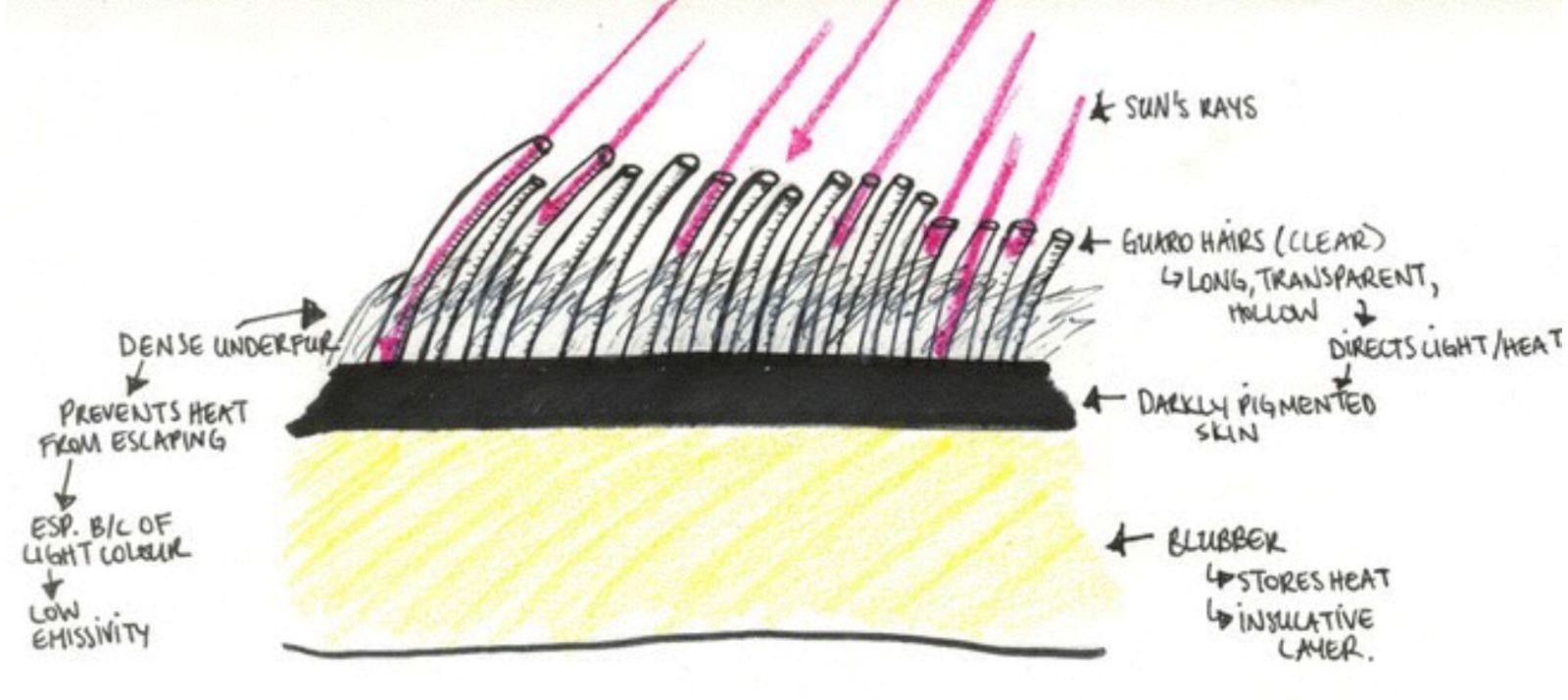
 "No one was talking about the threat of resistance. It was an invisible threat – but once it appeared, it was already too late. We gave this threat a face and a name, so people could start talking about it," Mr. Asset explained. "There's an old saying, `If you want to own the solution, you have own the problem.' So we were the ones to start talking about it."
Mr. Assent cautioned that this is only one way of marketing in Europe. Again, there is no official blueprint for marketing in the European Union, only thousands of examples, including this one. However, this was a successful example of how his company was able to create a flexible structure with a coherent message that allowed each individual country to continue to build upon that structure. Each country could change the theme, language, type of crop, and even the story, but the central concept would remain the same.
The end result of this marketing campaign? Bayer was successfully positioned as the leader and preferred partner in integrated weed management.
"No one was talking about the threat of resistance. It was an invisible threat – but once it appeared, it was already too late. We gave this threat a face and a name, so people could start talking about it," Mr. Asset explained. "There's an old saying, `If you want to own the solution, you have own the problem.' So we were the ones to start talking about it."
Mr. Assent cautioned that this is only one way of marketing in Europe. Again, there is no official blueprint for marketing in the European Union, only thousands of examples, including this one. However, this was a successful example of how his company was able to create a flexible structure with a coherent message that allowed each individual country to continue to build upon that structure. Each country could change the theme, language, type of crop, and even the story, but the central concept would remain the same.
The end result of this marketing campaign? Bayer was successfully positioned as the leader and preferred partner in integrated weed management.
 Discovering the Synergies between Different Countries (The Polar Bear Analogy)
Of course, language is only one of the many things dividing the countries. There are also vast social, legal and cultural differences. Instead of harping on these differences, Mr. Asset cautions, they need to be embraced. At the same time, you need to find the common denominator, or synergies, between the many countries.
When marketing in the European Union, he explained, you simply can't create a campaign that tells different groups of people the same story, uses the same pictures, and talks about the same issues.
"It doesn't work, because you aren't embracing the differences", he says. "You have to instead create a flexible structure that adapts to their needs."
At first glance, it seems quite contradictory to try to both embrace differences while adapting to different needs. How can we accomplish this in marketing?
In order to demonstrate how to accomplish this, he made an analogy of marketing in Europe to the anatomical design of a polar bear. At first, Mother Nature asked the polar bear what it wanted to look like, and he requested black skin in order to soak up the sun's rays. Later, the polar bear realized that it might be better to have white skin because there's a lot of snow, since if he's white he'll be protected from his enemies.
Amazingly, Mother Nature found a solution that takes both needs into account. Polar bears have black skins which soak up the sun's rays, and are stored by a layer of blubber underneath this skin. On top of this black skin, the polar bear has a layer of white fur that camouflages him in the snowy climate and helps to keep him safe from his enemies.
He even illustrated Mother Nature's idea of this flexible structure with a diagram of his own (We loved your diagram, Dirk!):
Discovering the Synergies between Different Countries (The Polar Bear Analogy)
Of course, language is only one of the many things dividing the countries. There are also vast social, legal and cultural differences. Instead of harping on these differences, Mr. Asset cautions, they need to be embraced. At the same time, you need to find the common denominator, or synergies, between the many countries.
When marketing in the European Union, he explained, you simply can't create a campaign that tells different groups of people the same story, uses the same pictures, and talks about the same issues.
"It doesn't work, because you aren't embracing the differences", he says. "You have to instead create a flexible structure that adapts to their needs."
At first glance, it seems quite contradictory to try to both embrace differences while adapting to different needs. How can we accomplish this in marketing?
In order to demonstrate how to accomplish this, he made an analogy of marketing in Europe to the anatomical design of a polar bear. At first, Mother Nature asked the polar bear what it wanted to look like, and he requested black skin in order to soak up the sun's rays. Later, the polar bear realized that it might be better to have white skin because there's a lot of snow, since if he's white he'll be protected from his enemies.
Amazingly, Mother Nature found a solution that takes both needs into account. Polar bears have black skins which soak up the sun's rays, and are stored by a layer of blubber underneath this skin. On top of this black skin, the polar bear has a layer of white fur that camouflages him in the snowy climate and helps to keep him safe from his enemies.
He even illustrated Mother Nature's idea of this flexible structure with a diagram of his own (We loved your diagram, Dirk!):

BayerCrop Science: Finding the Common Denominator for all Markets
One of his company's clients, BayerCrop Science, a major player in the herbicide market, offers a wonderful example of a marketing campaign that was successfully turned into a polar bear. Bayer is a company faced with a huge threat to the herbicide market: Resistance. Resistance is similar to the idea of immunity in medications; if a certain type of herbicide is used too much, it's useless in preventing weed growth. One simple solution to the problem is the use of rotation in certain herbicides. But this seemingly simple solution becomes very complicated to discuss in a marketplace such as the European Union. You have different crops in each country, in addition to different products, portfolios, product and trade structures, and topics. How did his company create a marketing campaign that would address the issue individually for each country, in a universal way? They decided to start with talking about the common denominator in each market. "No one was talking about the threat of resistance. It was an invisible threat – but once it appeared, it was already too late. We gave this threat a face and a name, so people could start talking about it," Mr. Asset explained. "There's an old saying, `If you want to own the solution, you have own the problem.' So we were the ones to start talking about it."
Mr. Assent cautioned that this is only one way of marketing in Europe. Again, there is no official blueprint for marketing in the European Union, only thousands of examples, including this one. However, this was a successful example of how his company was able to create a flexible structure with a coherent message that allowed each individual country to continue to build upon that structure. Each country could change the theme, language, type of crop, and even the story, but the central concept would remain the same.
The end result of this marketing campaign? Bayer was successfully positioned as the leader and preferred partner in integrated weed management.
"No one was talking about the threat of resistance. It was an invisible threat – but once it appeared, it was already too late. We gave this threat a face and a name, so people could start talking about it," Mr. Asset explained. "There's an old saying, `If you want to own the solution, you have own the problem.' So we were the ones to start talking about it."
Mr. Assent cautioned that this is only one way of marketing in Europe. Again, there is no official blueprint for marketing in the European Union, only thousands of examples, including this one. However, this was a successful example of how his company was able to create a flexible structure with a coherent message that allowed each individual country to continue to build upon that structure. Each country could change the theme, language, type of crop, and even the story, but the central concept would remain the same.
The end result of this marketing campaign? Bayer was successfully positioned as the leader and preferred partner in integrated weed management.





















